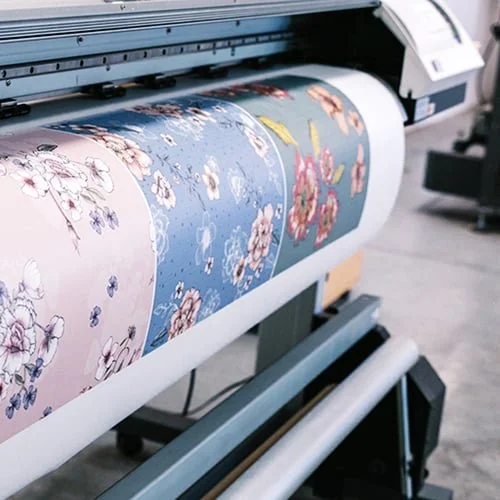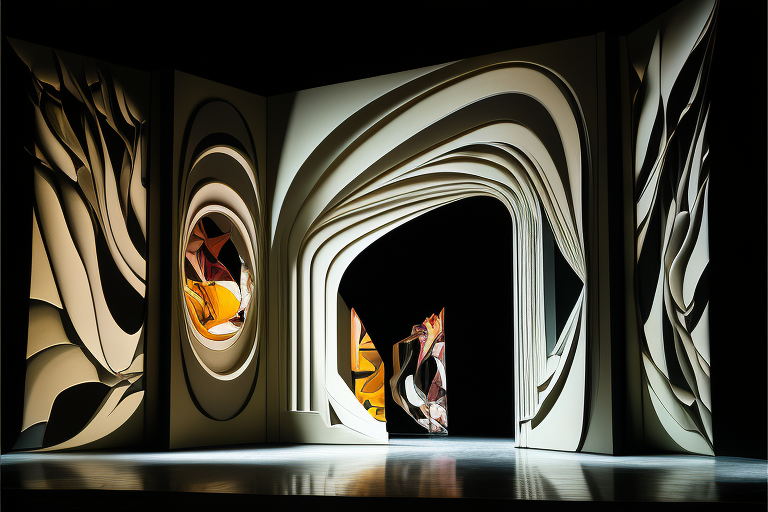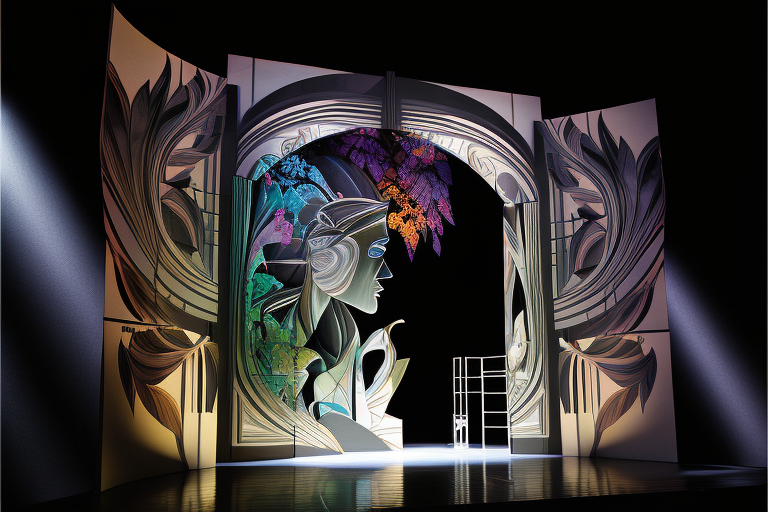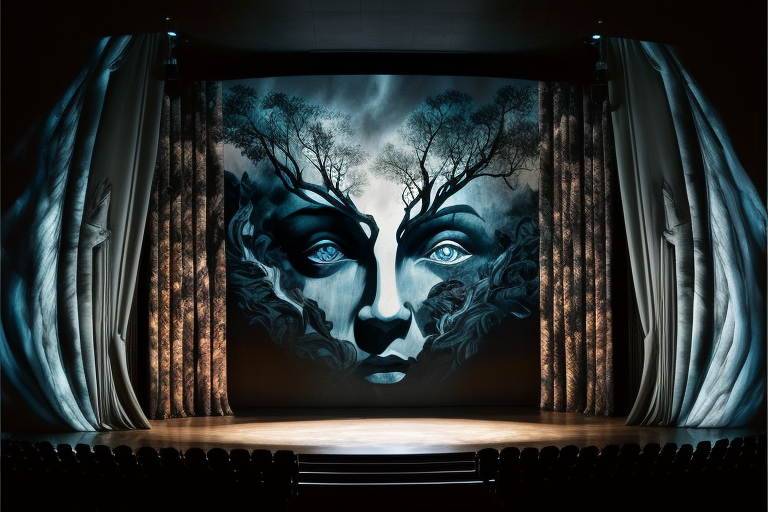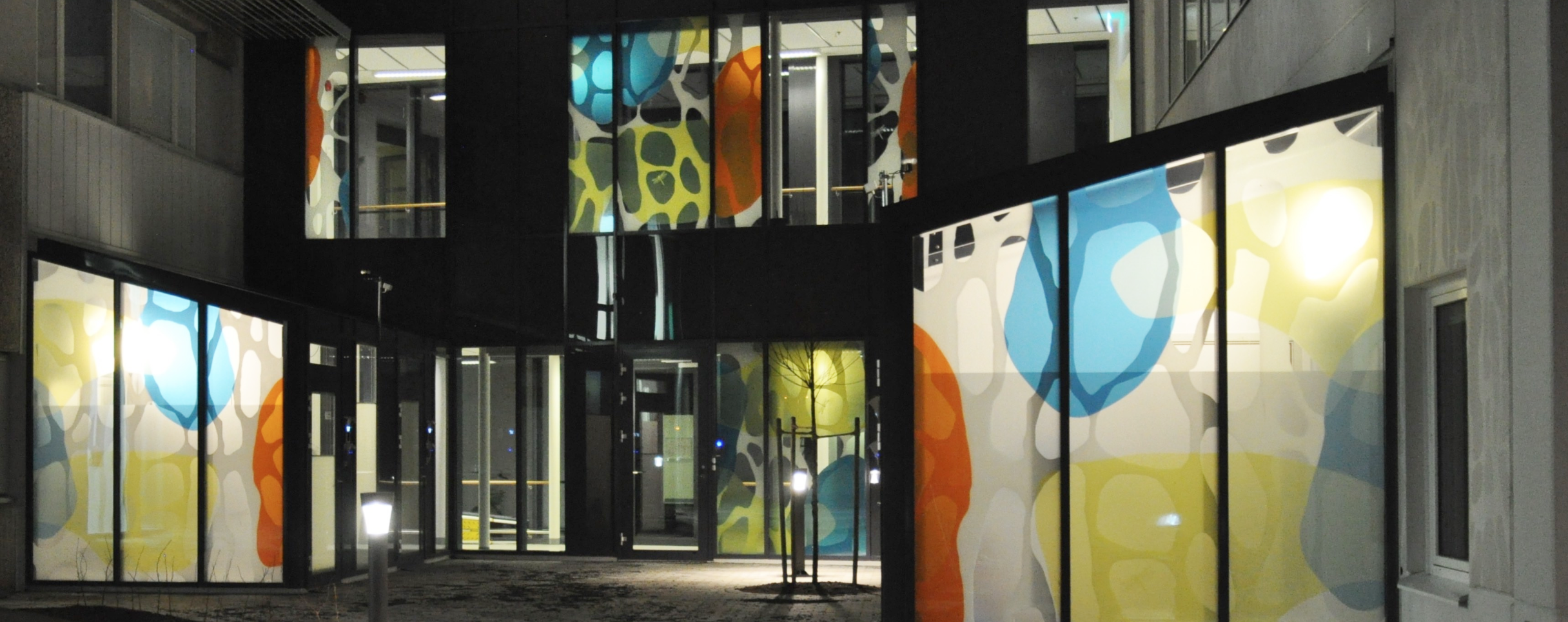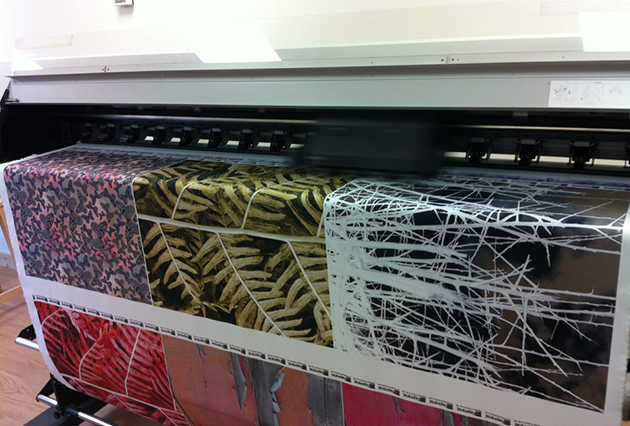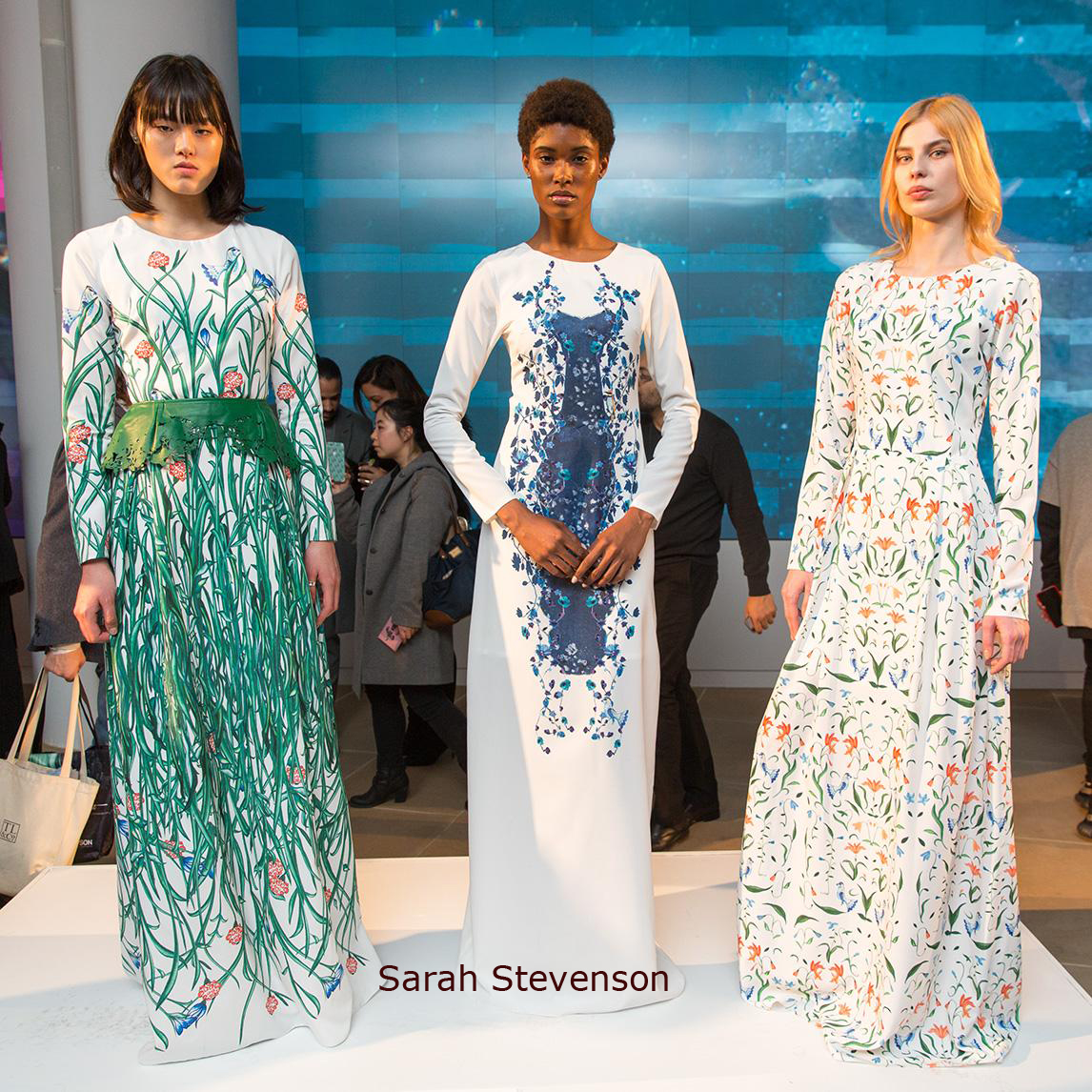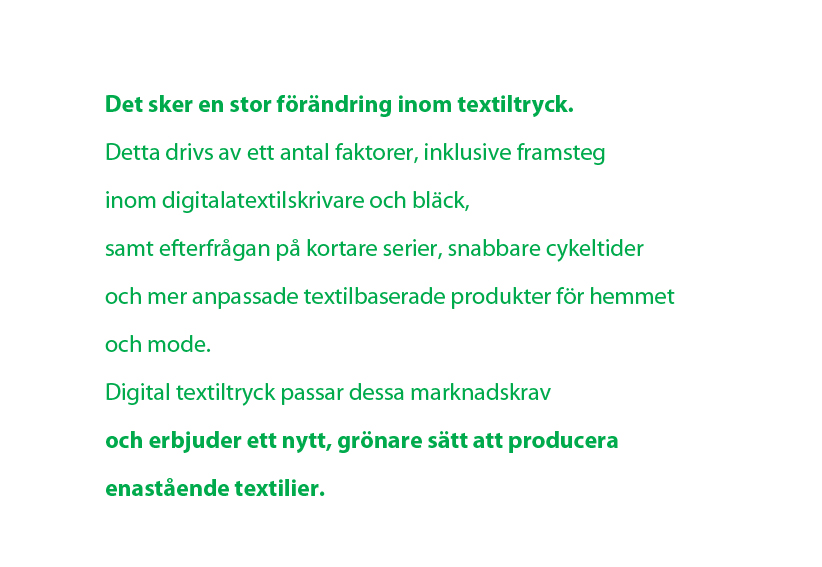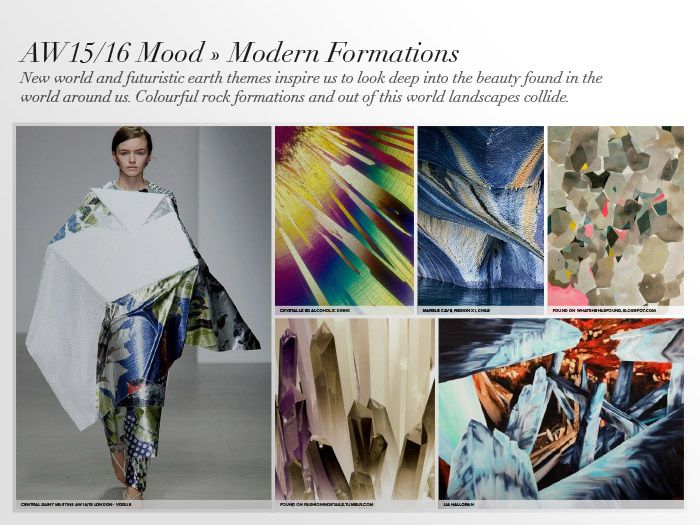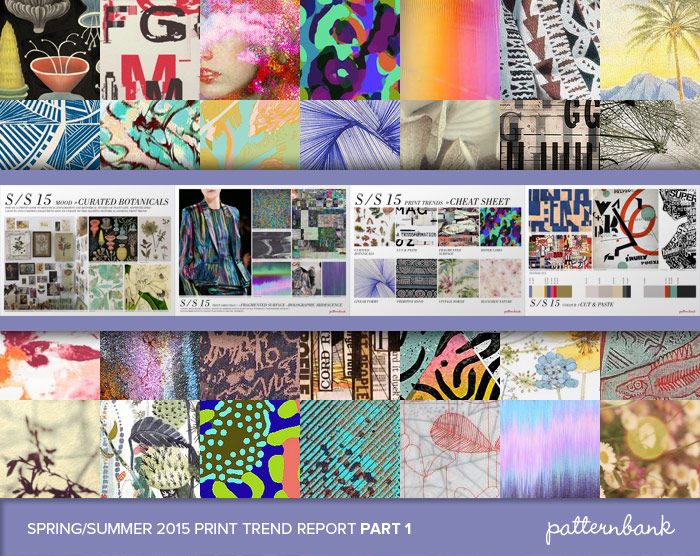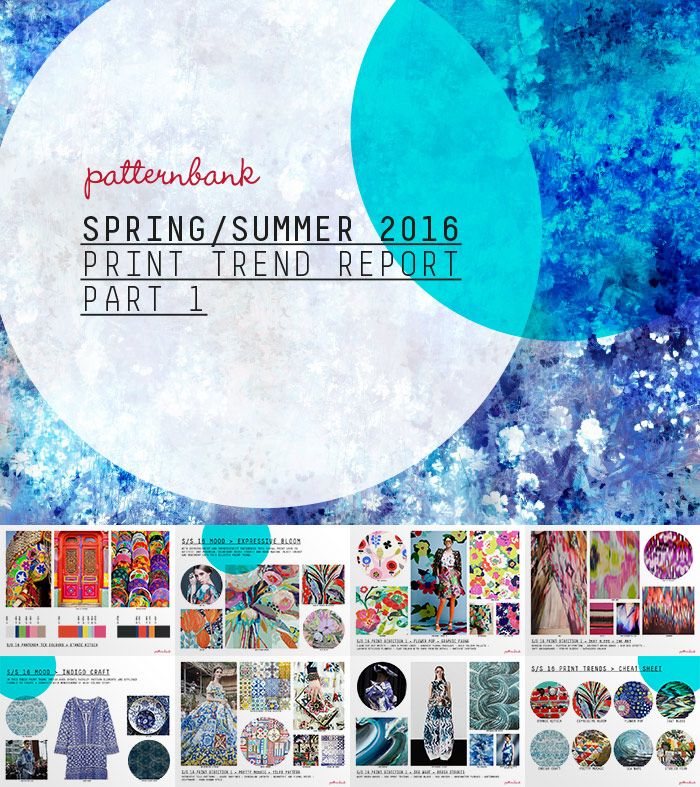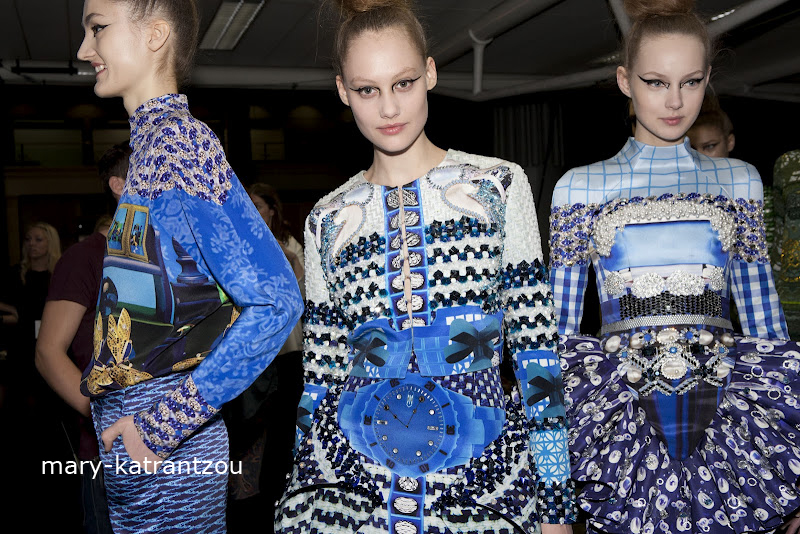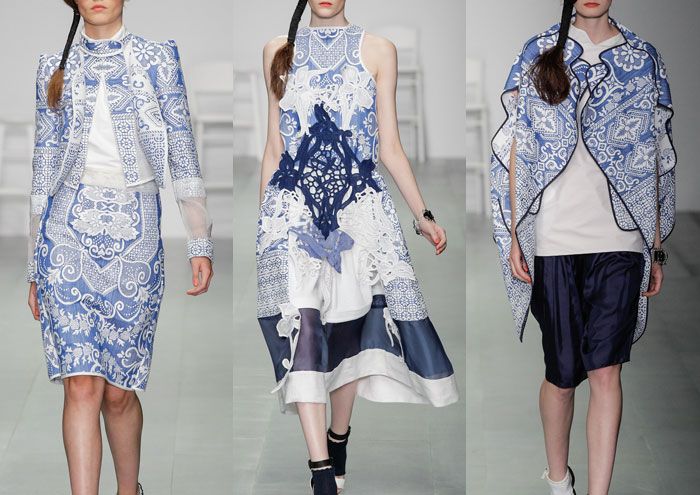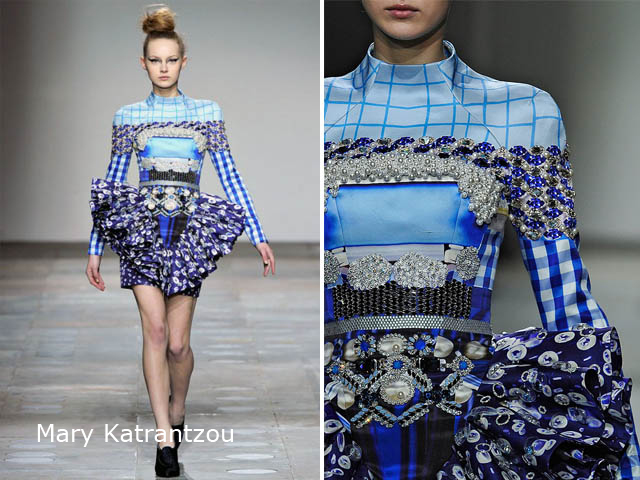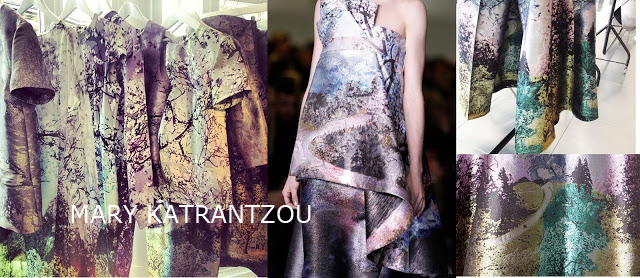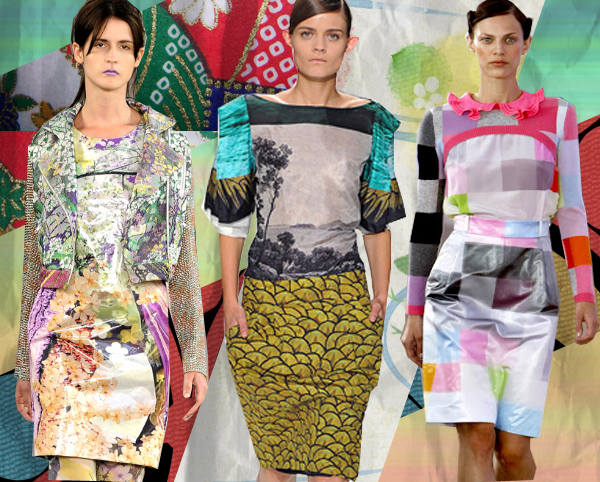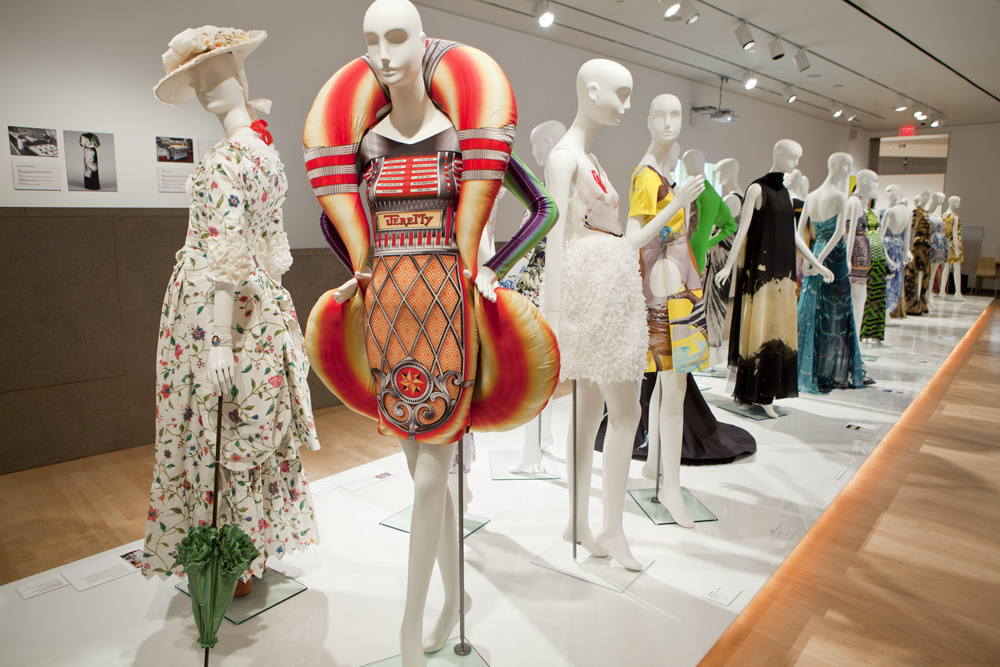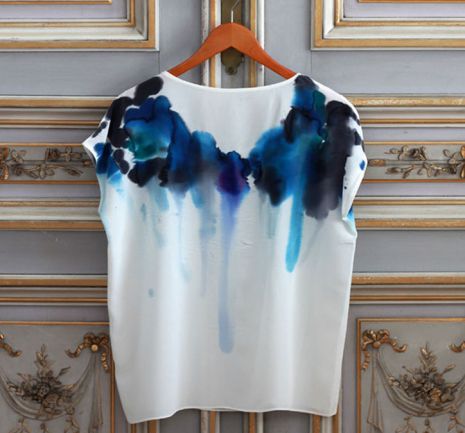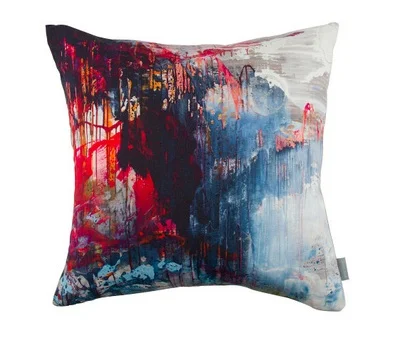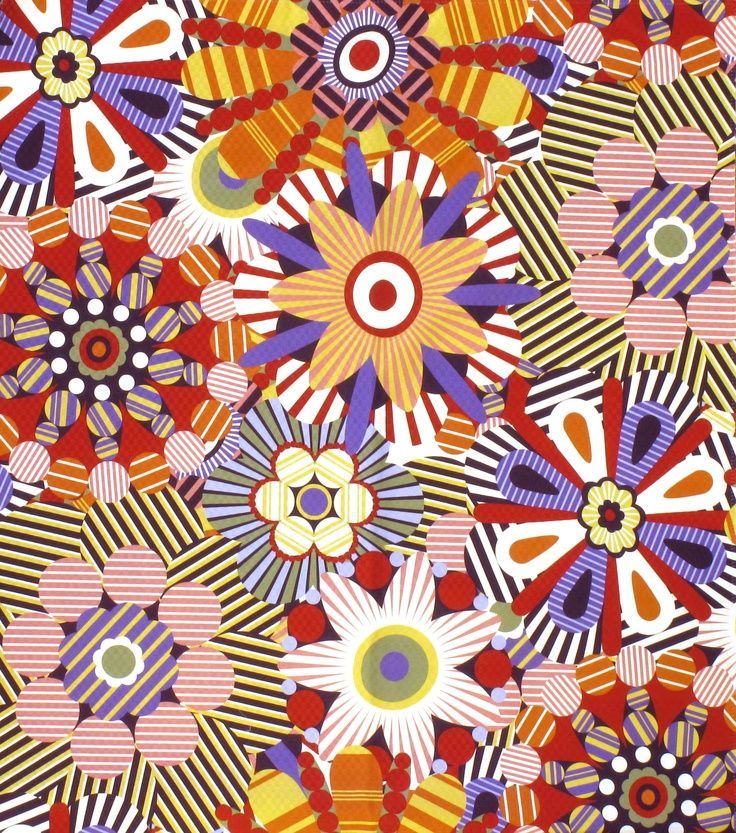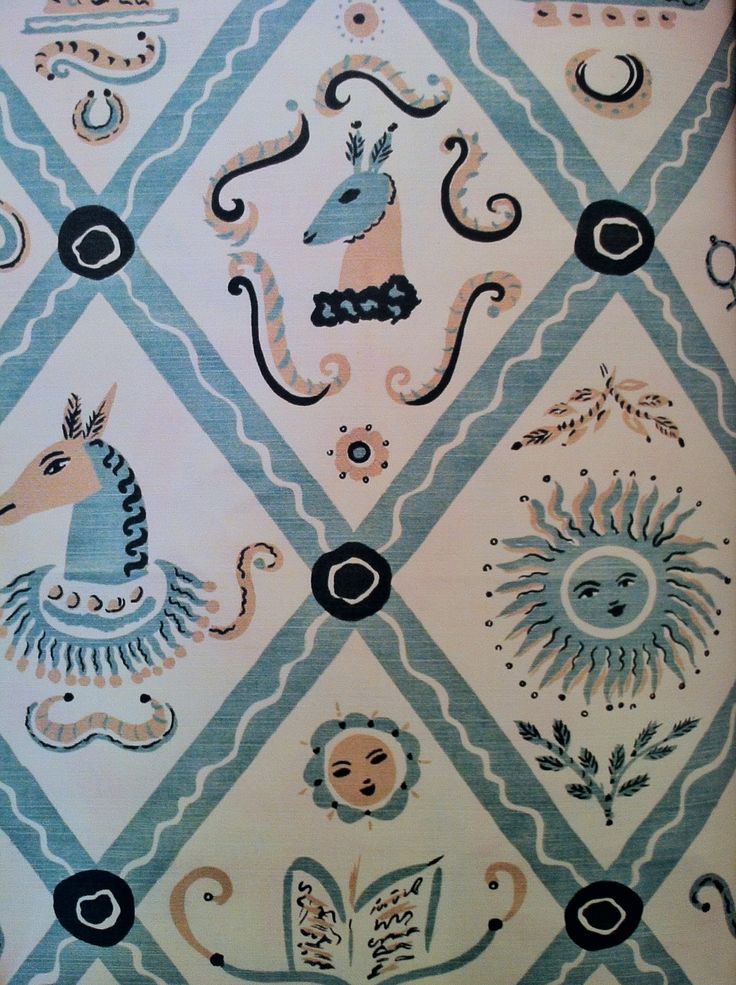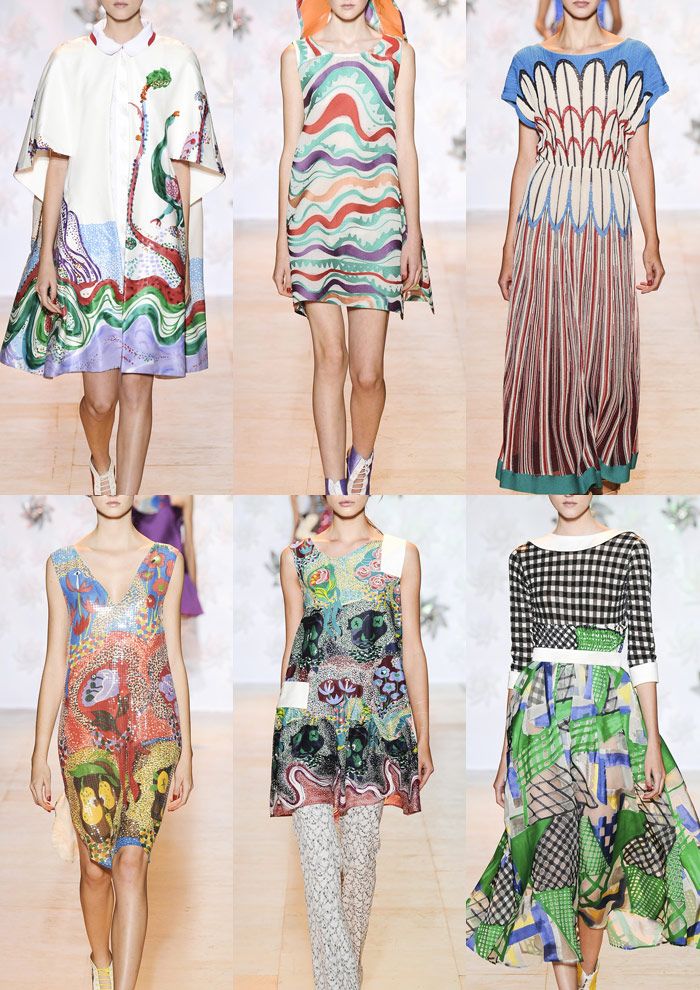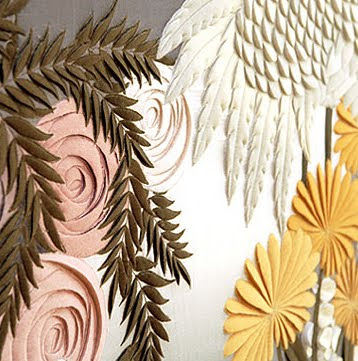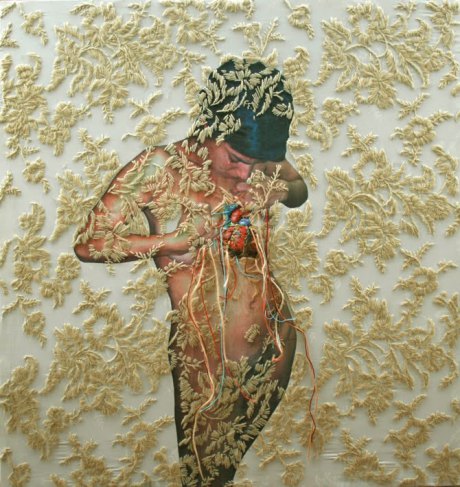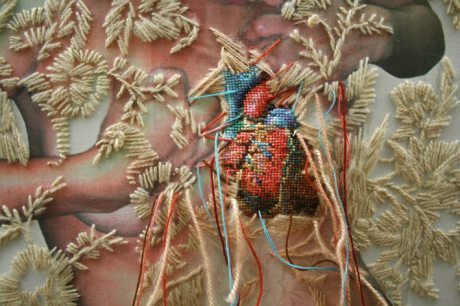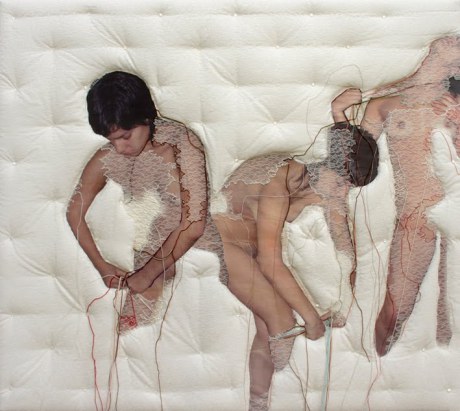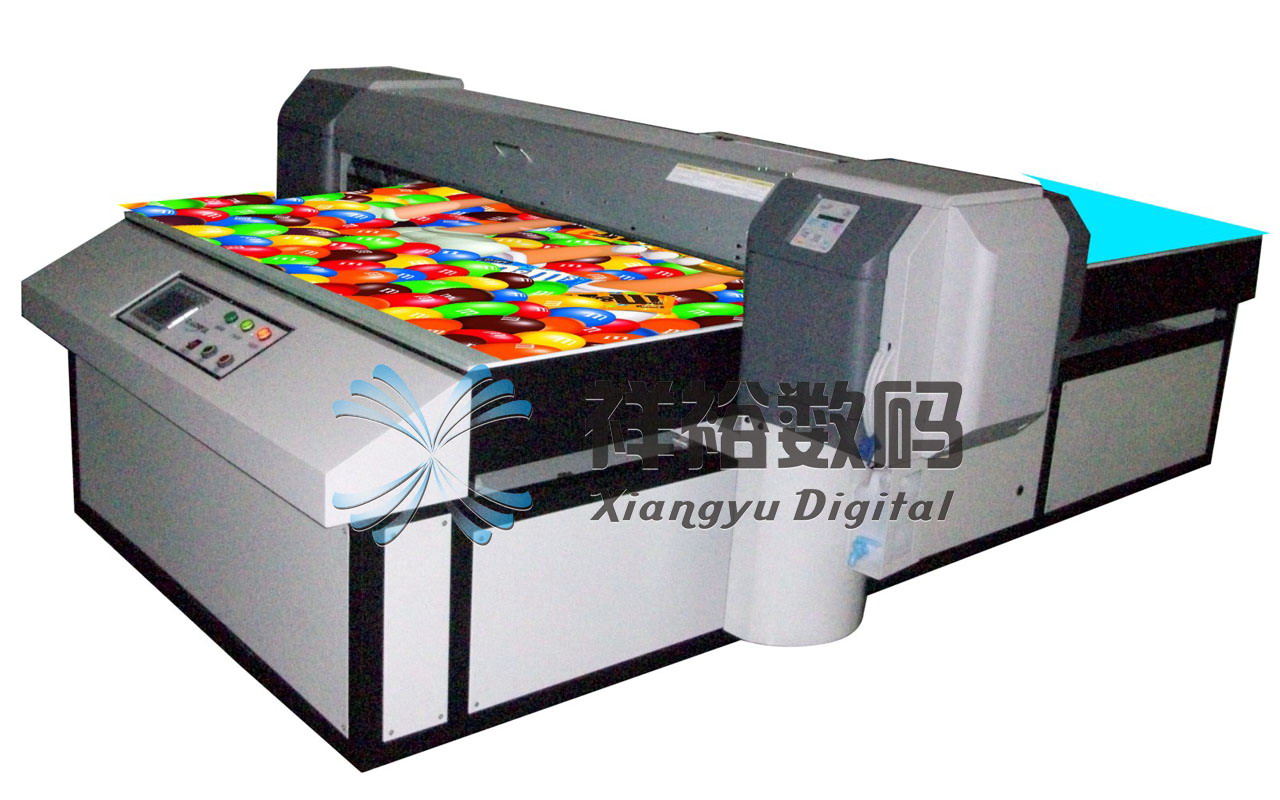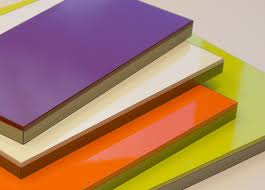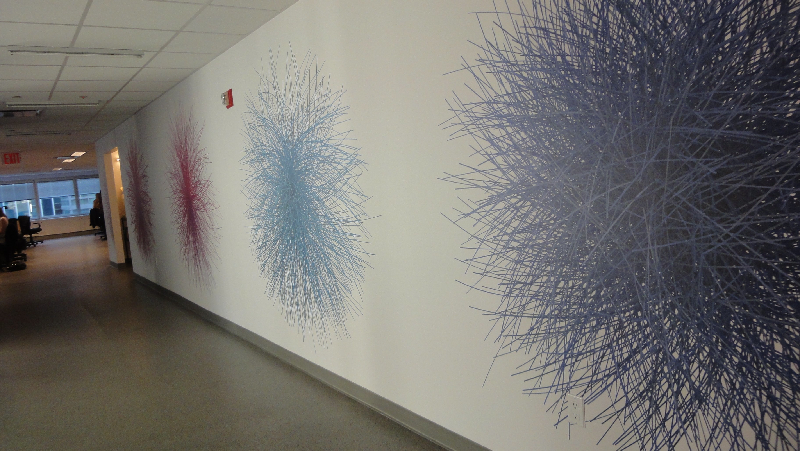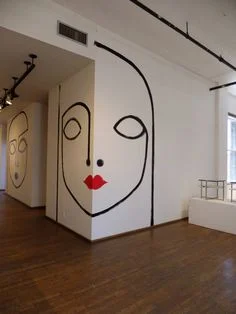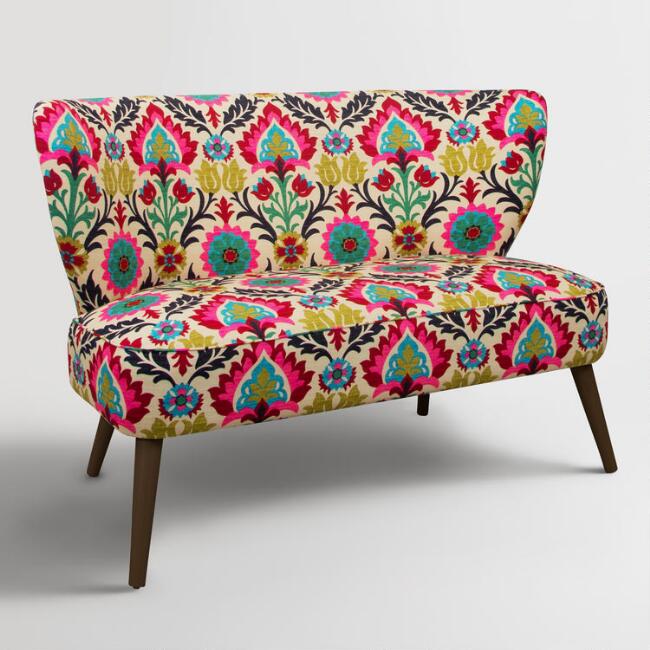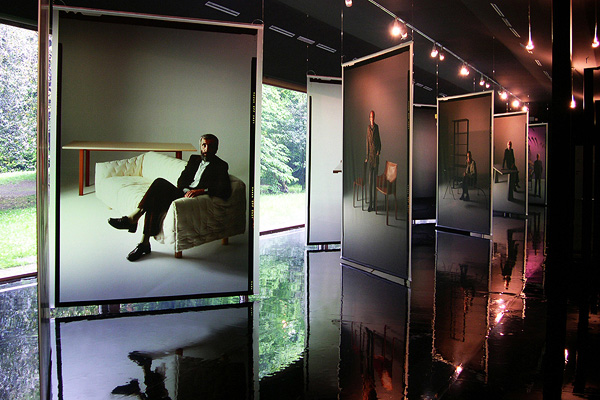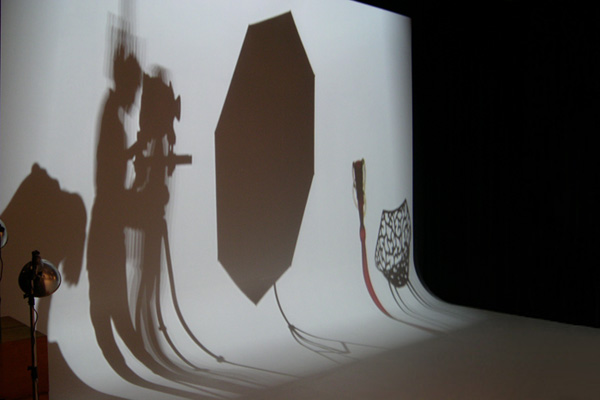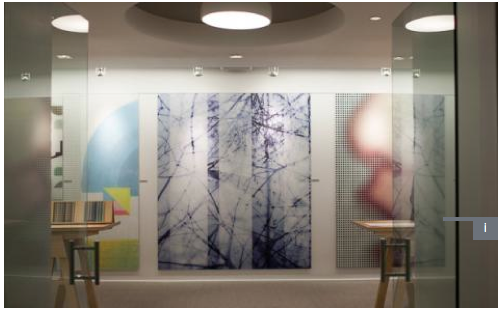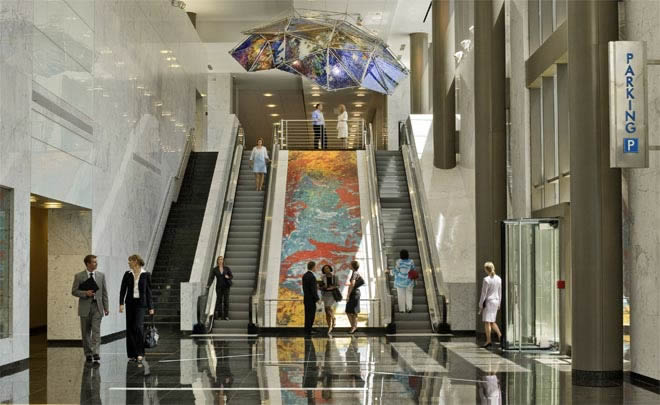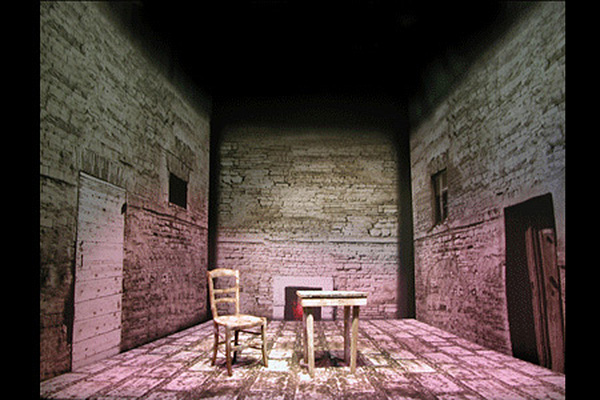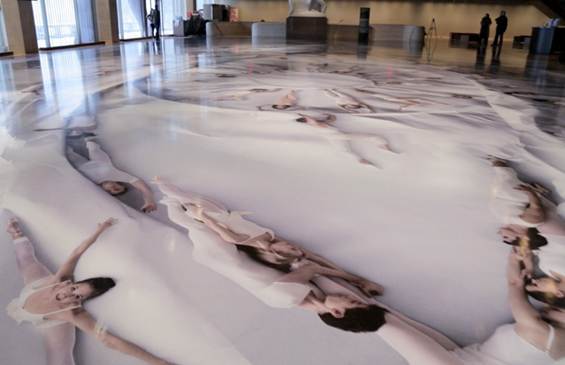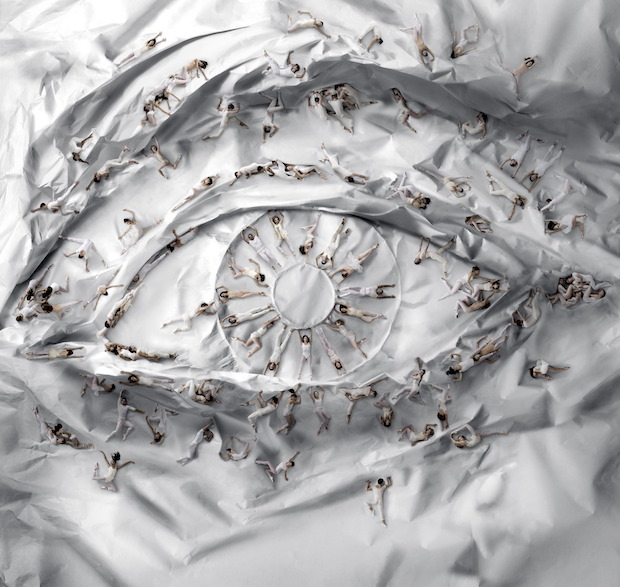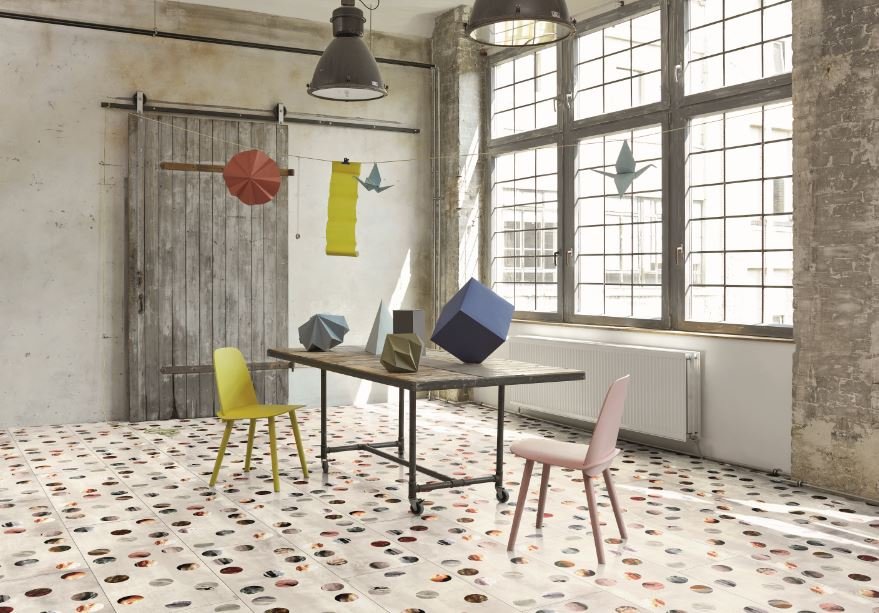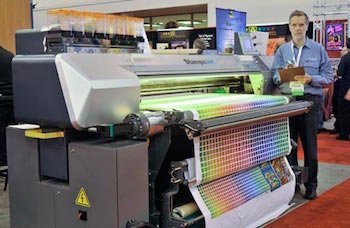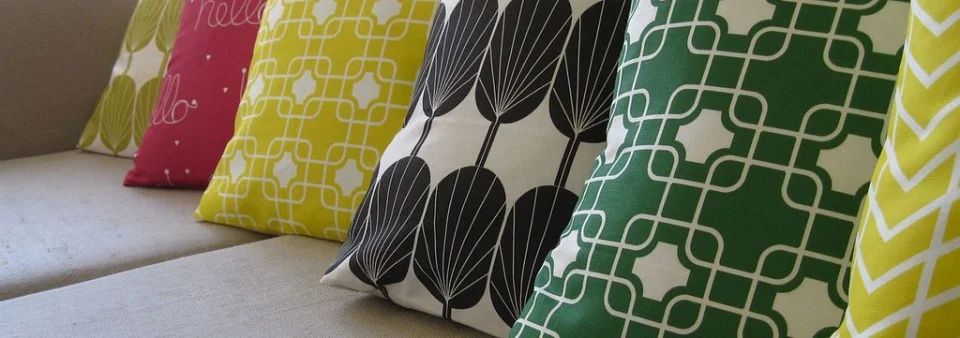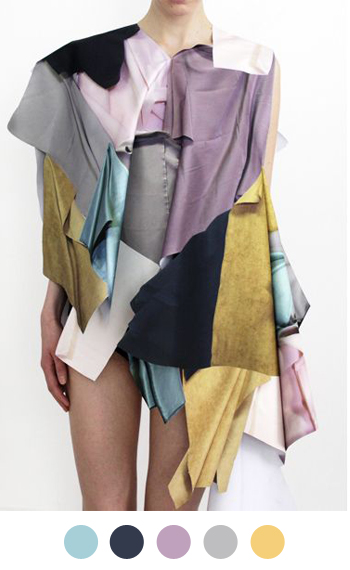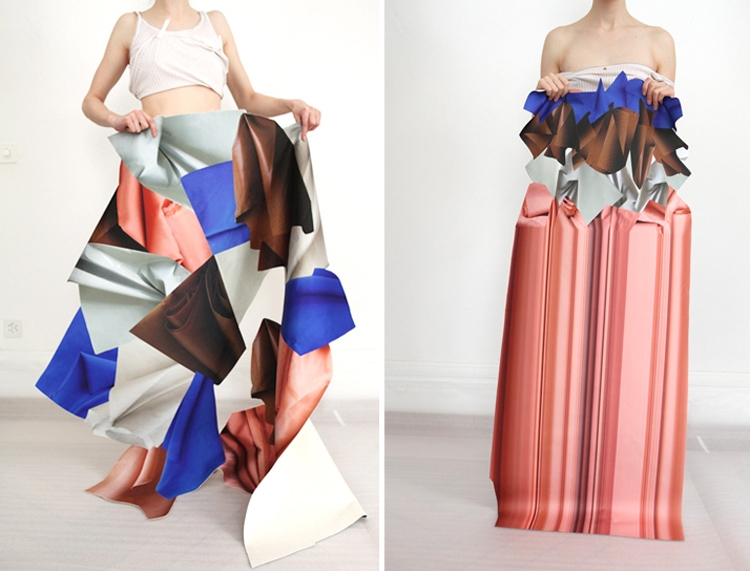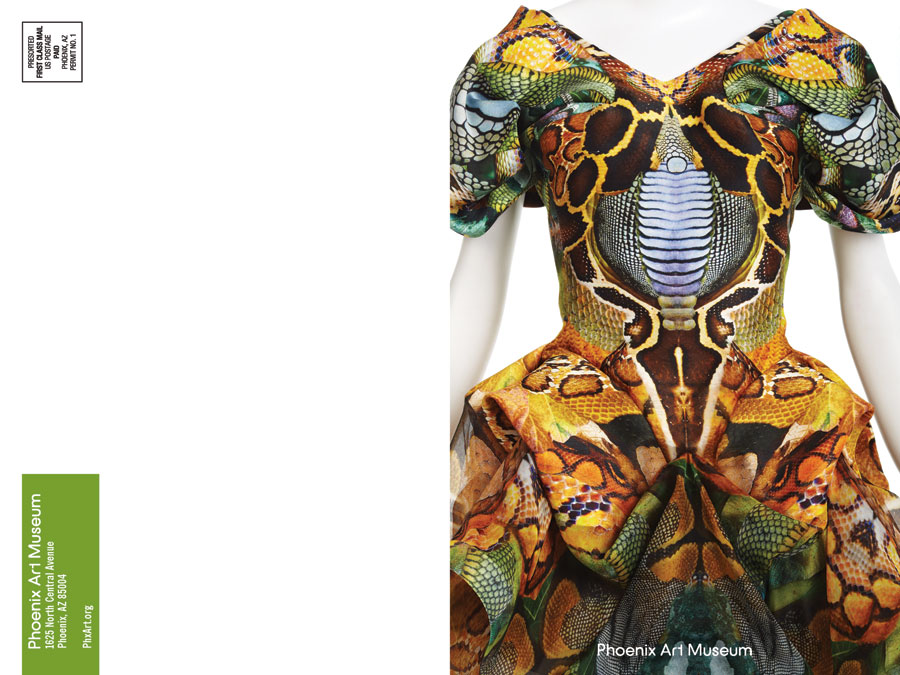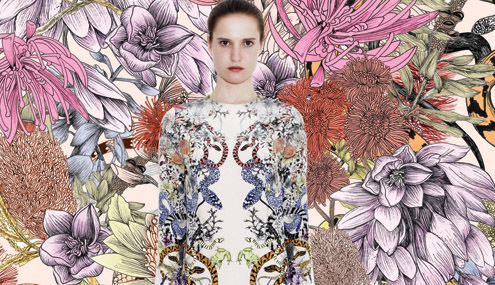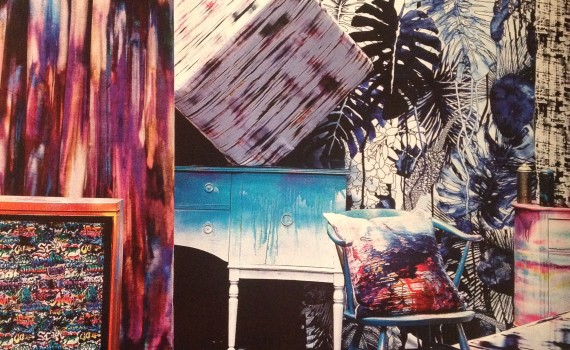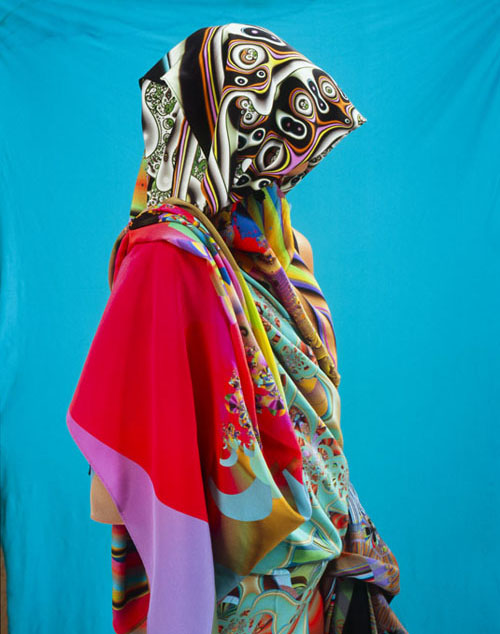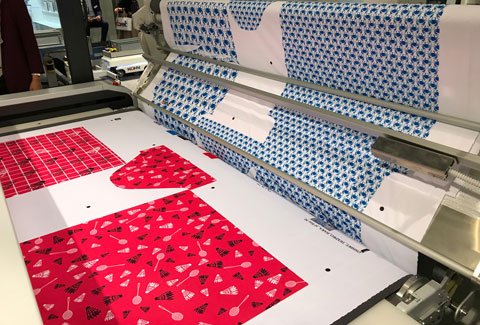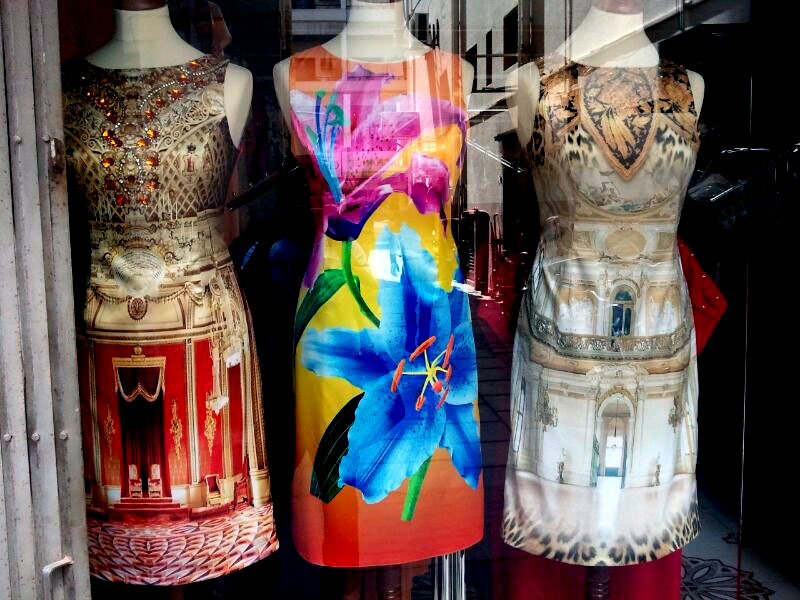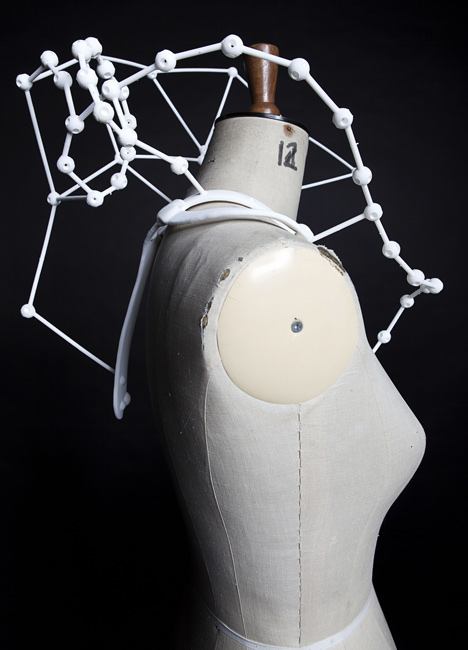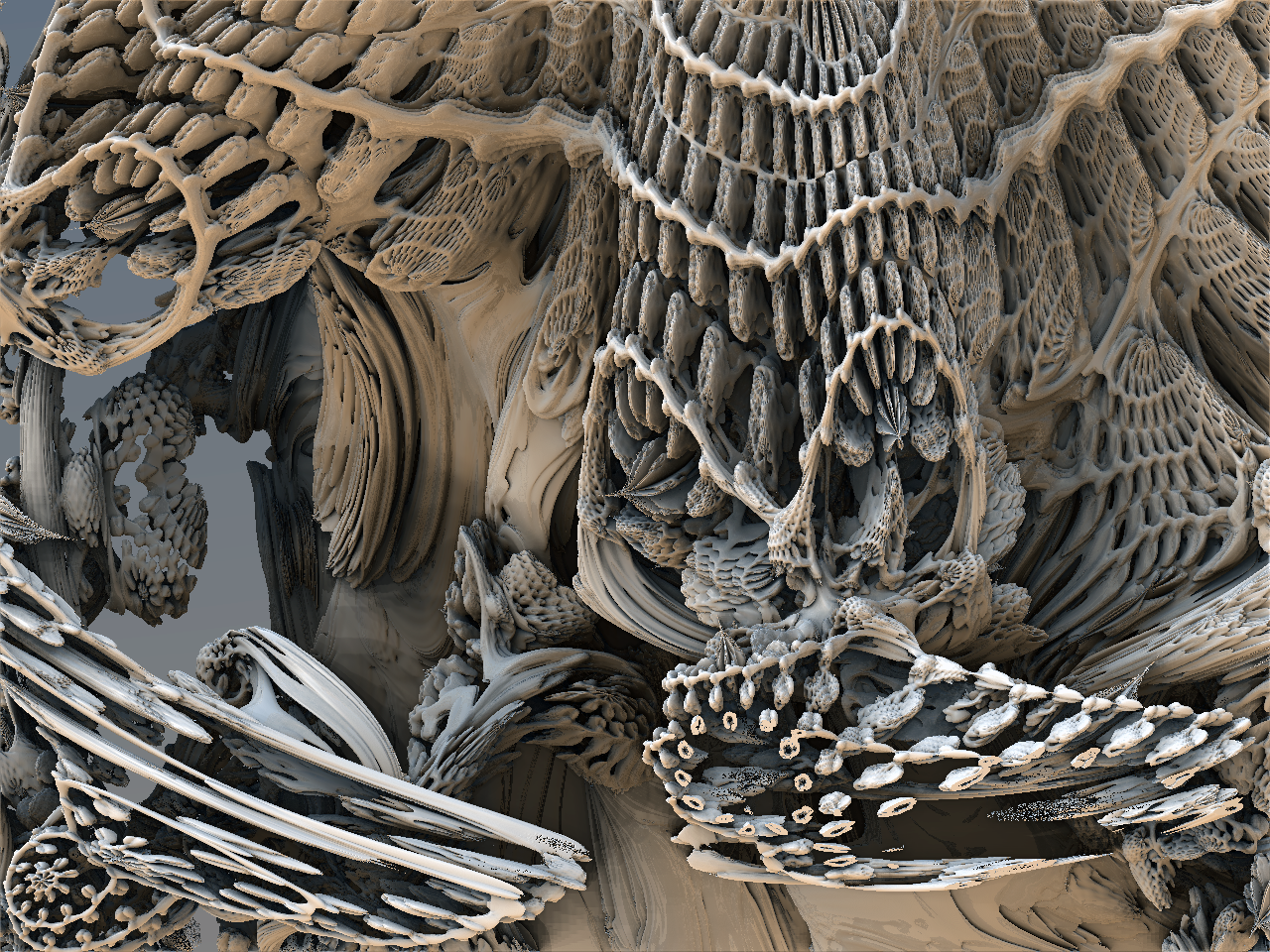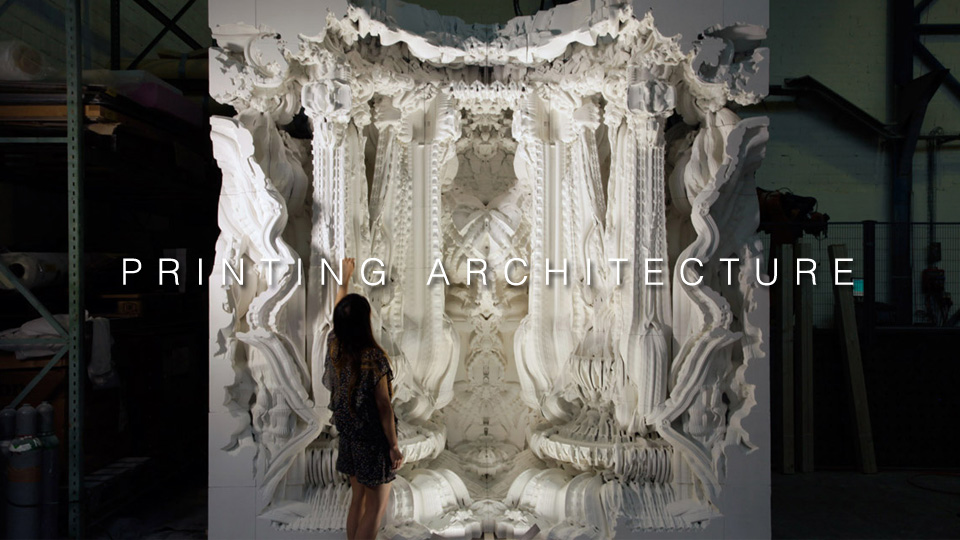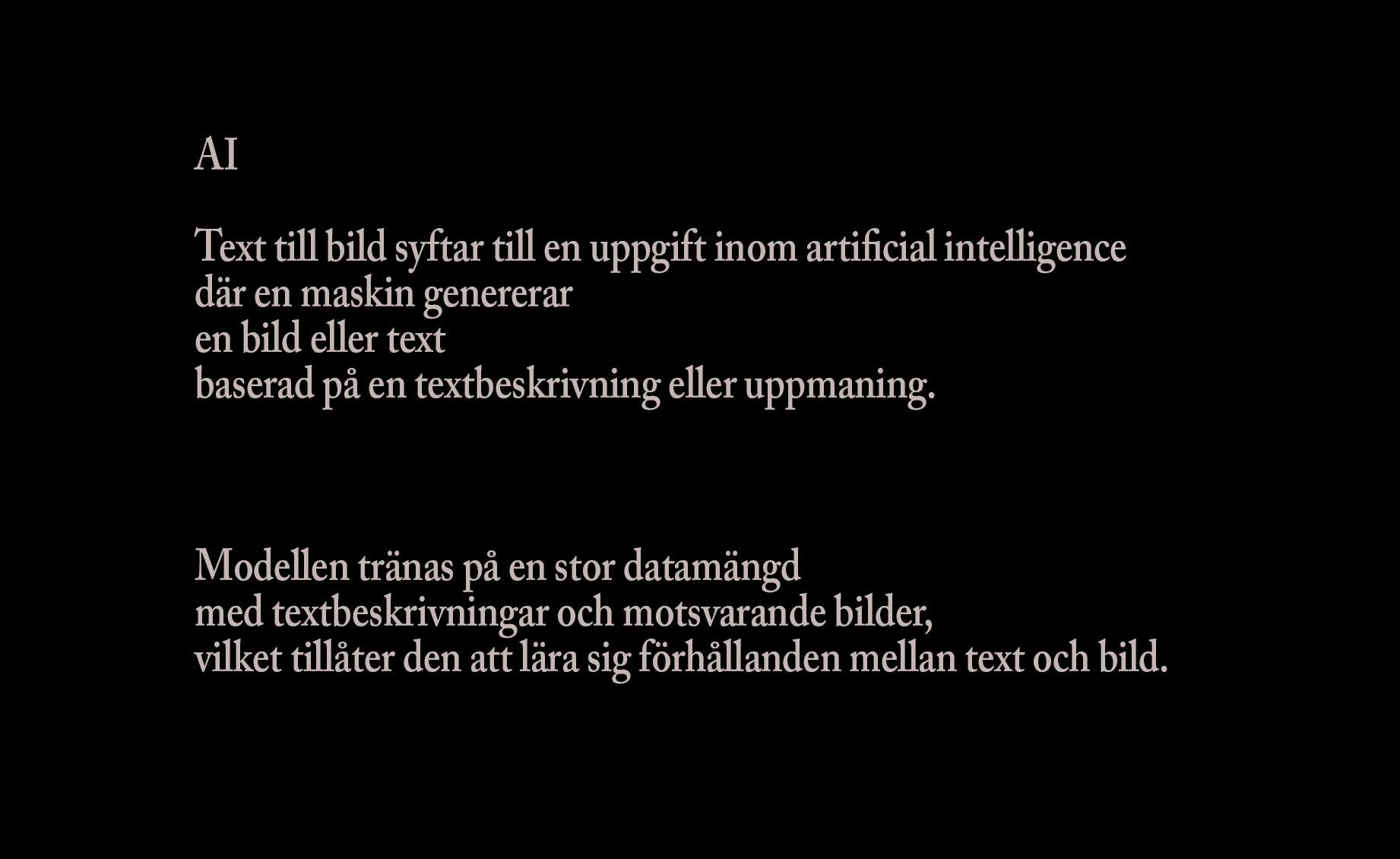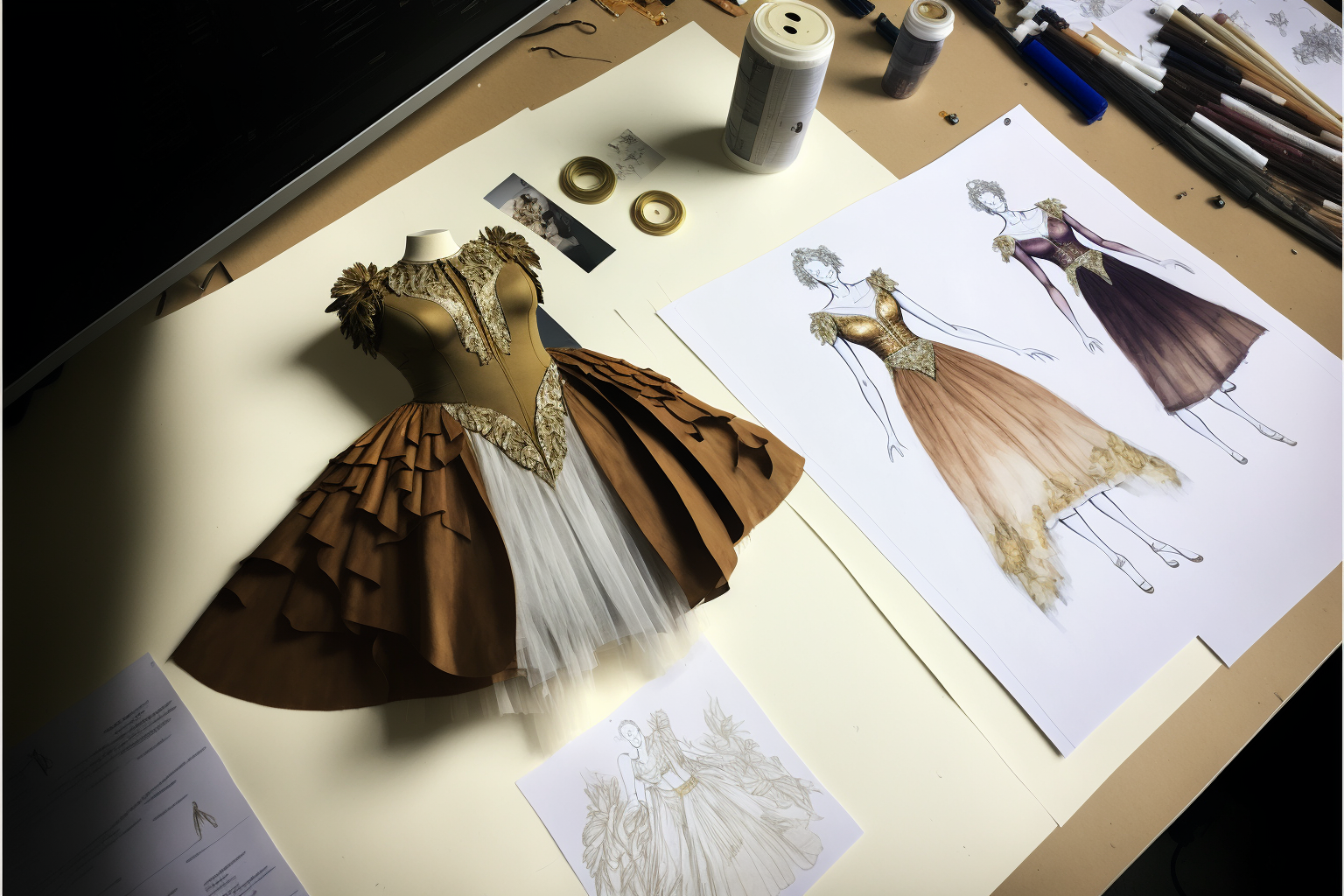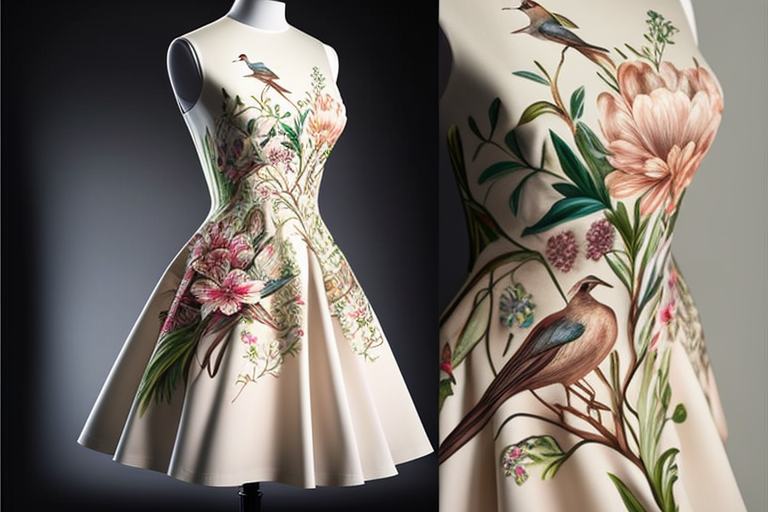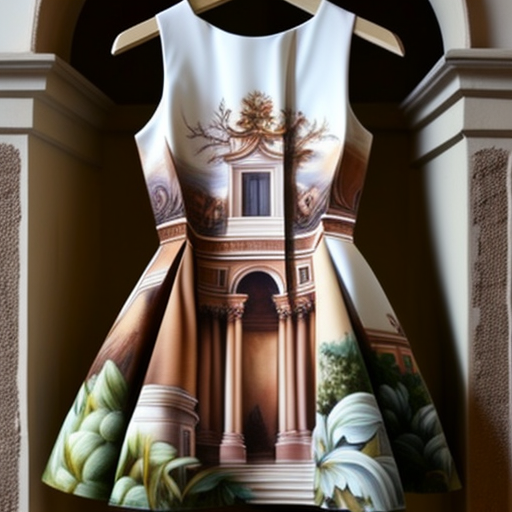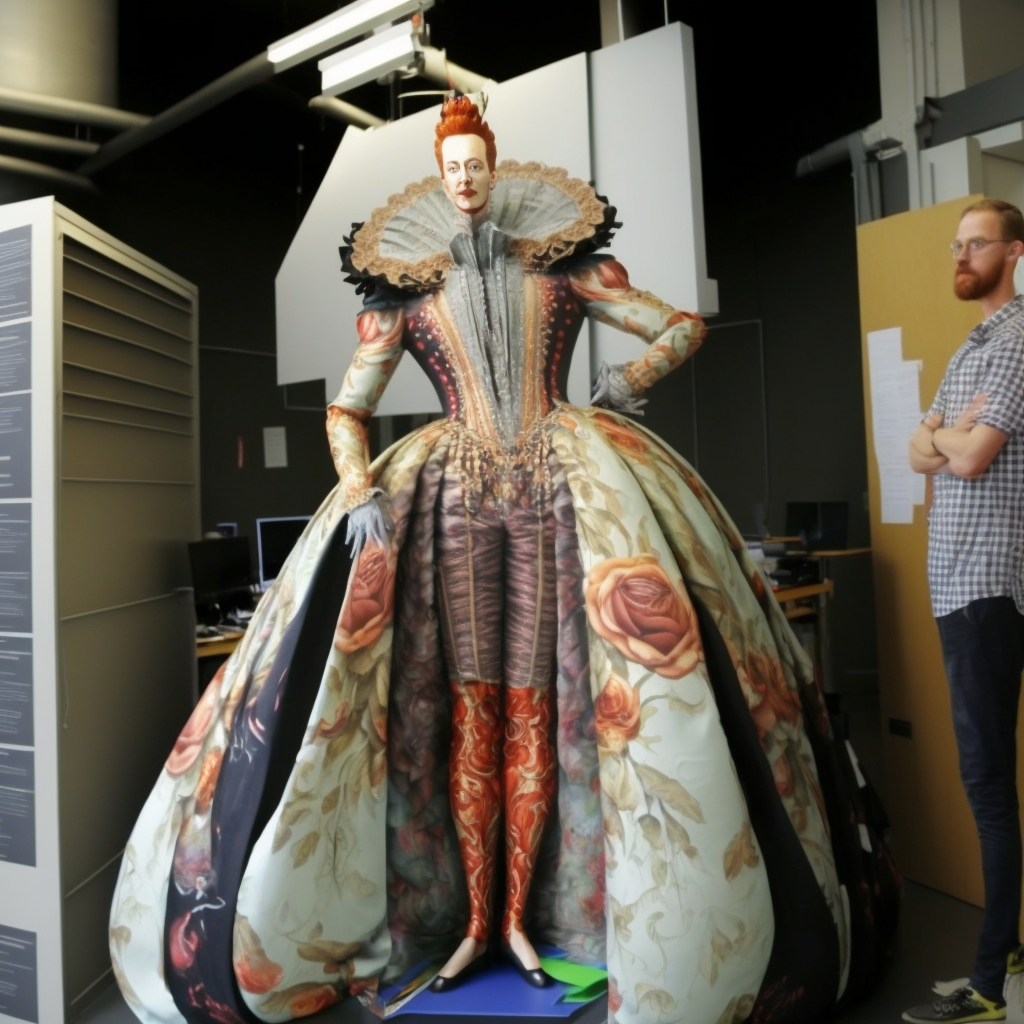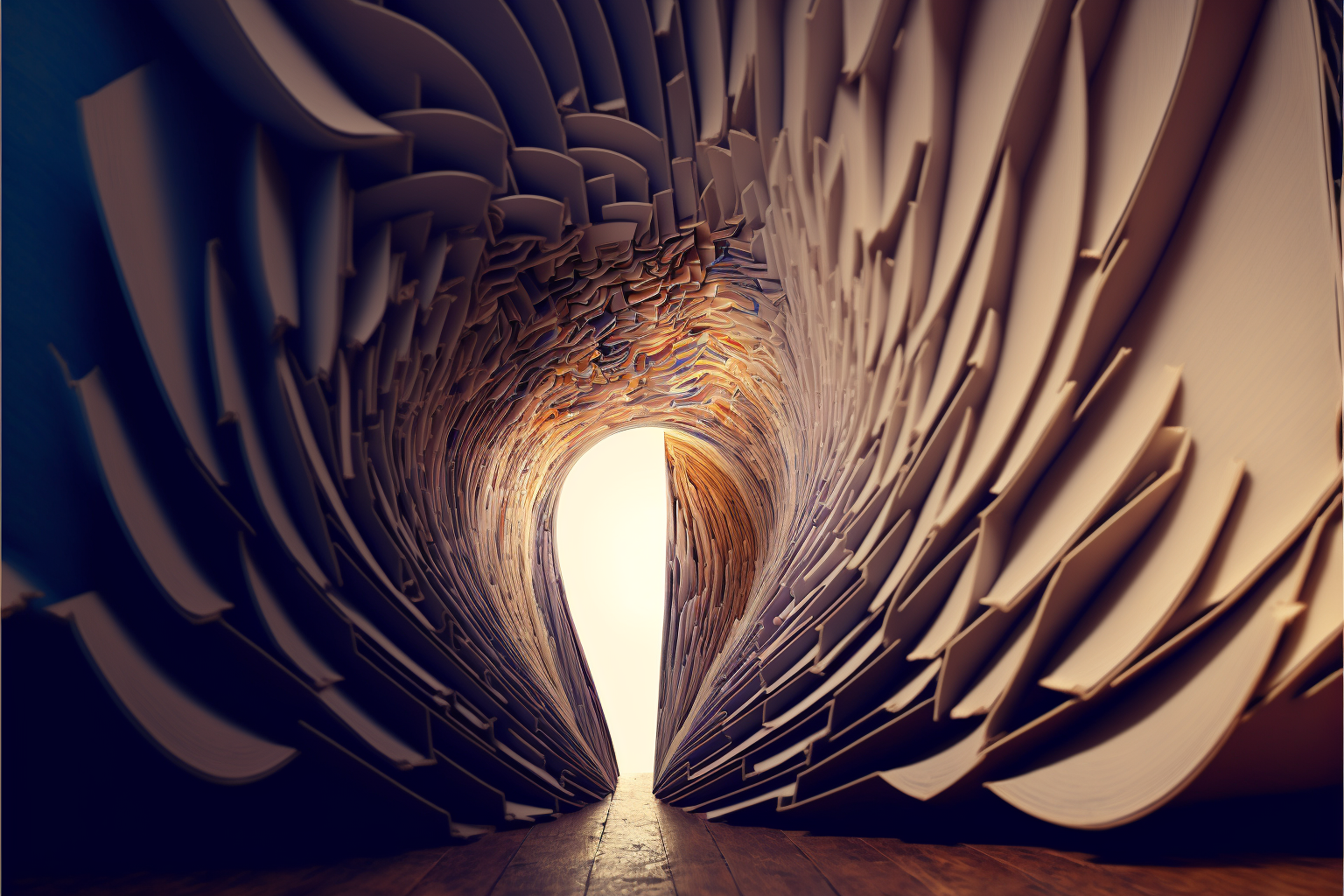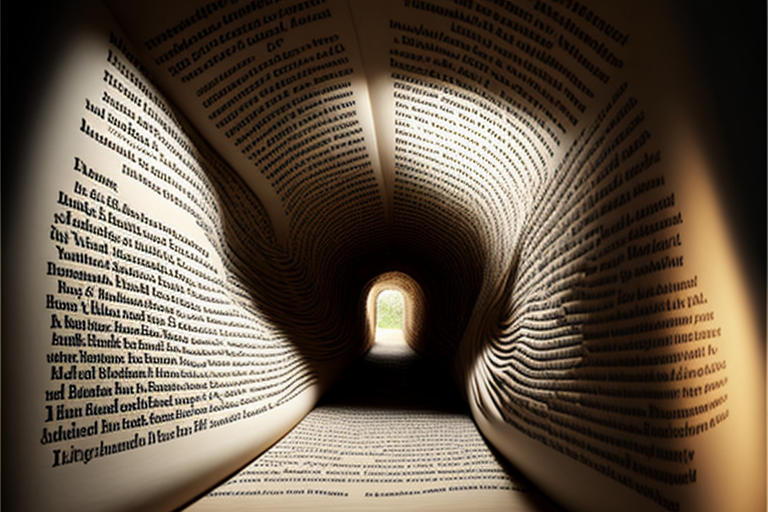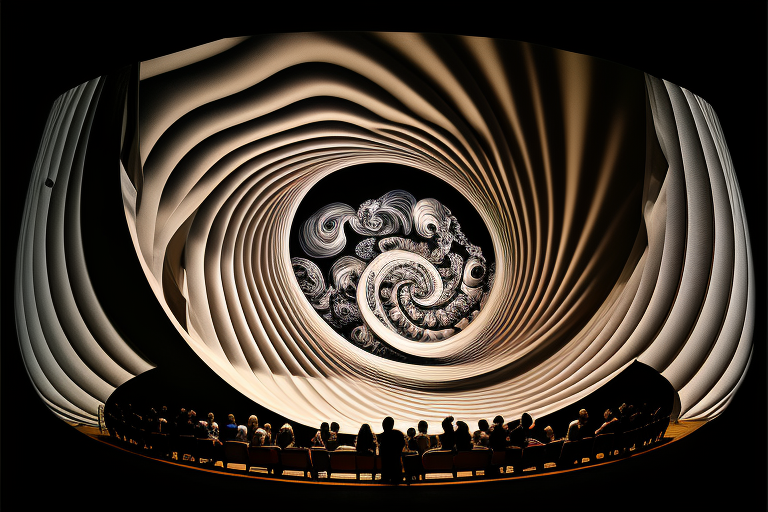Digital Academy Blog
tags..
- /Colours
- /Cutting out details
- /Design
- /digital colours
- /Digital printing
- /Filter excercise
- /half dropp repeat
- /Inspiration
- /Mask
- /orders
- /overlapping half dropp repeat
- /Photoshop
- /raster tutorials
- /Spoonflower orders
- /textile printing
- Big Image
- ekurs
- Klonstämpell
- lager
- printglas
- Printing Companies
- slide show
- tryck på glas
News, developments and printing methods - 2022-23
What is Digital Textile Printing?
'Digital textile printing is described as any ink jet based method of printing colorants onto fabric. Most notably, digital textile printing is referred to when identifying either printing smaller designs onto garments (t-shirts, dresses, promotional wear; abbreviated as DTG, which stands for Direct to Garment) and printing larger designs onto large format rolls of textile. The latter is a growing trend in visual communication, where advertisement and corporate branding is printed onto polyester media. Examples are: flags, banners, signs, retail graphics.
Types of printing can be divided into: Direct Print, Discharge Print, Resist Print, Pigment Print, Specialty Print
Digital textile printing started in the late 1980s as a possible replacement for analog screen printing. With the development of a dye-sublimation printer in the early 1990s, it became possible to print with low energy sublimation inks and high energy disperse direct inks directly onto textile media, as opposed to print dye-sublimation inks on a transfer paper and, in a separate process using a heat press, transfer it to the fabric.
It was patented in 1968 and popularised in the 1990s with the creation of more affordable digital printers, and in the last thirty years has opened up many new options for textile designers and artists. Since its beginning that it was quite expensive is now extremely affordable way to dye and print on textiles and vide range still growing amount of materials. Provides the capability to print detailed designs in fast brilliant colours.
High resolution and vivid colours: Digital textile printing allows for highly detailed and vibrant prints that can match or even surpass the quality of traditional screen printing.
Digital printing can be used on a variety of materials in stage design, including:
Short runs and flexibility: With digital textile printing, small runs and custom designs can be easily produced without the need for expensive set-up costs associated with screen printing.
Faster turnaround times: Digital textile printing can produce prints much faster than traditional methods, allowing for quicker turnaround times on projects.
Cost-effective for small production runs: Digital textile printing is a cost-effective option for small production runs or custom designs, as it eliminates the need for expensive set-up costs.
Eco-friendly: Digital textile printing uses less water and ink, which reduces the environmental impact of textile production.
Variety of substrates: Digital textile printing can be used on a wide range of fabrics, including natural fibers, synthetics, and blends.
Personalization: Digital textile printing allows for easy customization and personalization of textiles, which can be useful for small businesses and online retailers.
No color limitations: Digital textile printing allows for the use of an unlimited number of colors and color matching, which is not possible with screen printing.
Easy to use: Digital textile printing systems are easy to use and can be operated by anyone with minimal training.
Scalability: Digital textile printing allows you to start small and scale up as needed, which is perfect for small businesses and start-ups.
Sublimation Printing
Sublimation printing is one of the newest techniques in the industry. Sublimation printers use heat to transfer dye onto paper which is then transferred either on fabric or the garment itself. The method is very similar to the heat transfer method, but there is one crucial difference. The heat sublimation ink transforms from a liquid to gas before totally disintegrating into the fabric. The ink’s gaseous state allows the ink to penetrate the fabric completely instead of sitting on top of the fabric.
Best Used For:
Sublimation printing is great for all-over/seam-to-seam printing. It is also good for placement prints which would be hard to engineer on fabric by the yard. The process results in bold, vivid artwork.
Affordability:
While the quality is better, this process is much more costly than the heat transfer method because of the cost of the equipment/ink costs.
Pros:
Since the gaseous ink dissolves completely into the fabrics, the cloth remains soft to the touch.
The quality lasts longer than heat transfer or digital printing methods making it a great option for activewear and swimwear which get a lot of wear as well as exposure to sun/chlorine.
Great for designs that need detail and precision.
Cons:
Fabric options are limited- sublimation inks only work on synthetics fibers, mainly polyester or poly blends.
DTG Design and printing process
DTG printing services
Direct to Garment, or DTG printing, is a process by which a digital image is printed directly onto your apparel using cutting edge printing technology and inks. This process allows us to print any quantity order with highly detailed full color designs at an affordable price.
https://www.printful.com/custom/womens-clothing
https://www.printful.com/custom/womens/dresses/all-over-print-long-sleeve-midi-dress
Digital printing can be used to create detailed and vibrant backdrops for stage productions. As well as:
Props: Props such as signs, banners, and posters can be easily and quickly produced using digital printing.
Costumes: Digital printing can be used to create detailed designs and patterns on costumes, making them more visually interesting and unique.
Set pieces: Set pieces such as furniture, walls, and floors can be decorated with digital printing, adding visual interest and depth to the set.
Flooring and carpeting: Digital printing can be used to create detailed patterns and designs on flooring and carpeting, which can be used to define different areas of the stage.
Lighting gels: Digital printing can be used to create custom patterns and designs on lighting gels, which can be used to create different lighting effects.
Scrims and projection surfaces: Digital printing can be used to create custom designs and patterns on scrims and projection surfaces, which can be used to create interesting visual effects during a performance.
Rigging and stage equipment: Digital printing can be used to create custom designs and logos on rigging and stage equipment, which can be used to add branding and visual interest to the production.
There are many materials that can be digitally printed on, including:
Printing on Glas
https://printglas.se/
Paper (such as brochures, flyers, business cards, posters, and booklets)
Cardstock
Vinyl
Fabric (such as t-shirts and banners)
Canvas
Glass
Metal
Ceramic
Wood
Plastic (such as PVC and acrylic)
Leather
Polyester
Nylon
This list is not exhaustive, as new materials are being developed for digital printing all the time. Keep in mind that not all materials can be printed on with the same type of printer,
Lets look at the ordering process at BIG IMAGE :
They say: We strive to create the biggest possible impression with the smallest possible negative footprint. Environmental considerations and social responsibility – through technological progress and business culture – are woven into every aspect of Big Image.
Colour profile
https://bigimagesystems.com/artwork/
REQUIREMENTS: it's essential to assess your requirements carefully before you order prints.
https://bigimagesystems.com/artwork/
Want to read more about technical (printers) latest developments.
https://www.texintel.com/blog/2021/2/2/sv86retxmg4m5145120qqm9btfm6jw
Digitaltryck Slidshow
Slide show, Inspiration for digital printing applications.
Colour in Digitalprinting
Spoonflower’s digital print process
Spoonflower’s digital print process allows designers to use as many colors as they want in their designs and create millions of unique colors. But since every computer monitor is different, your printed fabric may not print exactly as it appears on screen. While we always try to ensure that colors are as bright and accurate as possible, there are a few ways to make sure you get the colors you want.
Ordering From The Marketplace?
If color is important to you, it’s always (always!) a good idea to order a test swatch before purchasing yardage. How the design looks on the screen can be a good preview, but in the end, the only way to judge whether your colors will look as you expect them to when printed is by holding the printed sample in your hands. Most people are happy with their Spoonflower orders, but testing first is a really good idea, and it’s absolutely essential if getting the colors just right is intrinsic to your goal.
Creating Your Own Design?
The easiest way to get the colors you want is to create your design using our color map or guide. We recommend working in the sRGB color space both because it produces beautiful color prints and because the Spoonflower Color Guide and Map (in sRGB color) will be more useful to you as color management tools. You can purchase the color map or color guide here: Design Tools.
The color guide is an 8" x 8" swatch of printed Basic Combed Cotton with 171 color chips and their hex codes. What is a hex code? They all render on fabric very similar to how they look on your screen.
The Color Map prints onto one full yard of any of our fabrics and on 4ft of wallpaper. This color map is comprised of over 1400 color chips and their hex codes.
You can use the guide or map with almost any image editing programs. Create your design in sRGB and use the hex code for the color you want in your design:
If you are a Photoshop or Illustrator user, you can also download the Adobe Swatch Exchange file for our Color Map.
All designs are automatically converted to sRGB for printing and this conversion will result in some color difference if you use an alternate color space for creating your design. You can still use whatever color space you are most comfortable with, but make sure you stick with it on all of your designs from start to finish, and test (test, test). If you do use another color space, the color selected from the color guide or map will not print accurately.
See also: Saving Image Files as sRGB
General Tips For Color On Fabric
A design displayed on your computer and the printed version will not look exactly the same. In addition, the printed version on your home printer will not look the same as the Spoonflower print. The inks, material, and technology are different.
Designs printed on wallpaper, gift wrap and polyester fabrics tend to print more vividly than on natural fiber fabrics.
You can expect to see slightly different results depending on the weight of the fabric you choose.
Dark colors that are similar to each other may blend together when printed without enough contrast. A perfect example is black stripes on a dark grey background.
Highly saturated dark colors printed in large, solid areas don't have the visual impact they do on your monitor because inks tend to render saturated colors a bit different than you might expect.
Our inks on fabrics with natural fibers aren’t capable of rendering a true, rich, saturated black, and this limitation will probably be noticeable in designs that use large fields of black. To avoid your black looking noticeably dark charcoal gray, it’s best to use black in small amounts, with a lot of lighter colors.
We only print on white fabric (there are no white inks), so there is no way to start with dark fabric and create a lighter colored design on top of it.
Fine details print best when they are high contrast. The resolution possible with digital printing on textiles is actually better than screen-printed textiles, so you can do amazing work with details in your designs as long as the contrast is good.
Dark colors work well as foreground and detail elements although again, they may print somewhat lighter than they look on your monitor.
We do not have metallic ink, so you will need to simulate that look with your colors.
Welcome to Patternbank
About Patternbank
Patternbank is the go-to location for the print, pattern & trend forecast intelligence.
Explore thousands of royalty-free patterns and exclusively licensed textile designs from the world's largest online collection of textile designers. Patternbank sells the finest handcrafted designs from a curated collection of highly skilled textile designs and artists, create inspirational print trend reports and provide consultancy to some of the biggest companies in the industry.
SOME PRINTING COMPANIES IN EUROPE:
----------------------------Silk Bureau, UK , high quality fashion print , large variety of textiles
The Silk Bureau
----------------------------------HOUSE OF U (earlier PRINT UNLIMITED, based in Holland)
https://www.houseofu.com/en/
how to prepare your files for print unlimited
---------------------------------ELOBINA, based in Sweden, textiles
----------------------------COTTON BEE , textiles , based in Poland
https://ctnbee.com/en
--------------------------SPOONFLOWER , WEB BASED IN GERMANY,
textiles, wallpaper
How to prepare files
Spoonflower
—————————-BIG IMAGE , Sweden
---------------------------PRINTGLAS, tryck på glas, Stockholm, tid för studiebesök kan bokas
--------------------------UVA PRINTING , based in Poland, PRINTING ON DIFRENT MATERIALS ALSO FOR OUTDOOR USE
http://www.drukowanieuv.pl//index.php?lang=en
--------------------GLASGOW SCHOOL OF ART, CENTER FOR ADVANCED TEXTILES
http://www.catdigital.co.uk/pages/
------------------Your Wallpaper, Stockholm, Sweden, prints wallpaper.
IMAGE ENLARGEMENT/ upscale / restoration -AI TECHNOLOGY
------------------ARC
https://arc.tencent.com/en/ai-demos/faceRestoration
------------------VANCE AI
https://vanceai.com/image-enlarger/
IMAGE FROM PRINTGLAS
Spoonflower, how to...
SPOONFLOWER -ALL ABOUT COLOUR
How Can I Make Sure My Design is the Colour I Want?
Spoonflower colour map
Map
ORDER TEXTILE SAMPLES AND COLOUR CARD
http://www.spoonflower.com/design_tools
Fabric
https://www.spoonflower.com/spoonflower_fabrics/#Chiffon
more on colour and digital textile printing
https://support.spoonflower.com/hc/en-us/articles/204444620-How-can-I-make-sure-my-design-is-the-color-I-want-
WHAT ARE COLLECTIONS AND HOW DO THEY WORK?
https://support.spoonflower.com/hc/en-us/articles/204444550-What-are-Collections-and-how-do-they-work-
HOW CAN I GET SWATCHES AT A REDUCED PRICE?
https://support.spoonflower.com/hc/en-us/articles/204444540
How to Turn Art into Fabric
https://blog.spoonflower.com/2015/08/how-to-turn-kids-art-into-fabric/
Spoonflower PRO
Pro is a premium service for small business owners.
Benefits Include:
Free standard shipping worldwide
Guaranteed 1-week turnaround time
Half-price expedited shipping
Unlimited half-price swatches & swatch samplers
Dedicated help team
Exclusive access to insider news
läs mer om :
OTHER PRINTING COMPANIES / tryckföretag
The future of digital textile printing
The Future Is Bright for Digital Textile Printing
While this prediction by Smithers Pira is aggressive, it’s certainly within the realm of possibility, and the firm has done its homework. As the price of digital textile printing falls, and the quality and customizability of these products continue to rise, you can expect to see a giant boom in this market segment in the next half decade and beyond as growth levels off but continues to rise steadily.
The digital garment printing industry is starting to make its stamp within the larger printing industry. It has enjoyed significant growth in recent years and it looks set to grow even further in the future. Smithers Pira predicts double digit growth across 2016-2021, and is therefore making the digital textile printing one of the most exciting market opportunities in the print and textile industry.
Growth Opportunities
The company’s new report, The Future of Digital Textile Printing to 2021, forecasts an average annual growth rate of 12.3 per cent and expects the global market to more than double in value over the next five years, from nearly $2 billion in 2016 to more than $4 billion in 2021 (all figures in Canadian dollars). The soft signage and display materials sector is expected to maintain double-digit growth during that period, but the largest increase is expected in the clothing and household textile sector. This rapid and lucrative market expansion is being fuelled by a series of factors, including technical innovations and evolving end-user demands. The market in 2016 for the digital textiles market share was about 2.8% of the overall print volume. But the digital print share is set to boom in a segment where the mean growth is just 3%.
According to the Smithers Pira report, “The greatest acceleration across the study period will be in clothing, which has the key sub-segments of fashion, haute couture and sportswear. Household textiles are predicted to grow at the next fastest rate. Displays and signage are growing somewhat more slowly – from a larger base – but will maintain double digit annual growth across the Smithers study period, which will convert into the largest absolute increase in value for 2016-2021. Technical textiles will lose ground slightly, which is indicative of a lack of visibility of, or focus on, these smaller niche markets.”
Mike Horsten, GM of Marketing at Mimaki EMEA says, “There is a big change happening in textile printing. This is being driven by a number of factors, including the advancements in digital textile printers and inks, as well as the demand for shorter runs, faster cycle times and more customized textile-based products for home and fast fashion. Digital textile printing addresses these market requirements and offers a new, greener way to produce outstanding textiles.”
read more
Other factors
Quick turnaround is an increasing priority as the fashion segment embraces multiple mini-seasons and print-on-demand delivery models, said the report. This specifically suits inkjet production with its reduced set-up times. It’s also supported by the growing availability of web-to-print platforms. These portals are also enabling “value web” approaches – generating direct online sales of digitally printed clothing, and increasingly household décor as well. Finally, global textile industry dynamics are changing and the importance of Asian economies continues to increase.
Digital textile printing inks contribute to dynamic industry growth
Digital textile printing methods have contributed to an emergent industry and its growth has augmented the progress of the digital textile printing inks market. The inks that are used on small garments as well as on large format rolls of textiles have earned widespread popularity across various applications. The increase in the demand for 3D printing technologies has also boosted the market for digital textile printing inks, whether for clothing, household technical textiles, or displays. The development of various fashion trends has also augmented the growth of this market.
The global digital textile printing inks market was evaluated at $698 million in 2016. It is further expected to reach the impressive figure of $2.114 million by 2023. According to Allied Market Research, this would happen with a projected CAGR of 17.2% in the forecast period. The industry is expected to grow at a swift pace, owing to the rise in the number of investments by top market players. Moreover, the R&D projects that focus on better, cost-effective digital textile printing ink formulations are expected to provide ample growth opportunities for the entire market.
Att ladda ner photoshop, prov-version
https://creative.adobe.com/products/photoshop?promoID=KFOIF
Den versionen varar i 7 dagar och är en gratis helt fungerande version.
Viktigt eller brådskande?
Hur man lyckas med en "kurs i egen takt"
Kurser i egen takt faller in i den icke-brådskande kategorin. Bristen på deadlines kan vara ett tveeggat svärd. Å ena sidan, en frihet från stressen med deadlines. Å andra sidan tenderar uppgifter som har en deadline att prioriteras, bara för att de är mer brådskande och måste göras innan tiden tar slut.
Våra liv är fyllda av brådskande uppgifter. Vi måste ta reda på vad som är viktigt nog att ägna oss åt. En kurs som man genomför i egen takt kan vara viktig även om den inte är brådskande. Till exempel kan färdigheter för att skriva en CV, vara mycket viktig för ett framtida karriärbyte, men inte så brådskande eftersom ditt framtida karriärbyte ligger några månader längre in i framtiden...
Motivation
Nyckeln till framgång här är motivationen. Hur gärna vill du egentligen genomföra den här kursen? Kommer det att bli lagom intressant, eller finns det en mer lockande anledning att göra det? Kommer din framtida karriär eller ditt eget skapande förbättras på grund av det?
Håller du äntligen på att lära dig om ett ämne som alltid har intresserat dig?
Hur man förvandlar vilja till handling
Ok, så du har bestämt dig för att göra det. Du vet att du vill genomföra den här kursen i egen takt, men det kan fortfarande kännas svårt att sätta igång.
Ta fram din kalender eller dagbok och avgränsa tillräckligt med tid för att kunna påbörja och avsluta kursen.
Fördela denna tid på dagarna och veckorna. Uppskatta sedan hur många timmar du behöver avsätta varje dag/ vecka. Bestäm därefter exakt när du ska arbeta med kursen.
Börja vid utsatt tid, skjut inte upp. Stäng av dina e-postvarningar.
Sätt upp en Pomodoro och arbeta under din tilldelade tid, ta en kort paus var 25:e minut enligt beskrivningen här.
Håll koll på dina framsteg och ge dig själv belöningar.
På slutet, fira!
En sista tanke
Generellt sett är en kurs-i-egen-takt en solo-uppgift.
Om kursen inte har några deadlines, ställ in dina egna och håll dig till dem!
( text fritt översatt från engelska)
Har du andra tips? tipsa!
Lycka till :)!
Forbes writes about How Digital Printing Technology Is Taking Us Closer To Fully Customizable Clothing
The future of fashion, according to Epson, is all about customization – from the prints and colors we choose to wear, to indeed the size and shape that best suits us.
Tie together digital printing, a bit of artificial intelligence and some robotics on the end, and it’s a vision that’s not too far off, which is precisely what the technology company is hoping to help make possible on all accounts.
Read MoreEASY-TO-USE, AFFORDABLE SERVICES LIKE SPOONFLOWER ALLOW BUDDING DESIGNERS TO PUT THEIR STAMP ON THE FABRIC.
Fabric is printed on a larger printer at Spoonflower in Durham which gives designers the freedom to turn their own designs into custom textiles. Israel Schwartzberg
Digital fabric printing is one of the hottest new trends in the fashion industry. And the Triangle is at the forefront of this trend with facilities such as N.C. State’s new digital textile printing lab and Durham’s Spoonflower, a company that produces custom fabrics through digital printing techniques.
The new printers offer an alternative to traditional screen printing, which can be a costly process.
Bringing custom printing to consumers
Durham fabric producer Spoonflower (spoonflower.com) utilizes similar digital printing technology to create custom textiles (along with wallpaper and gift wrap) for designers and pretty much anyone else who’d like to create their own fabrics. The company allows customers to upload digital images – anything from photographs to original sketches or paintings – choose their fabric type and have their design produced in the quantity they need, from a yard to hundreds of yards.
EASY-TO-USE, AFFORDABLE SERVICES LIKE SPOONFLOWER ALLOW BUDDING DESIGNERS TO PUT THEIR STAMP ON THE FABRIC ITSELF, AS WELL AS ON THE DESIGN OF THE GARMENTS THEY PRODUCE. THE GREAT BENEFIT OF ALL THAT IS THAT THE INDUSTRY BECOMES MORE DIVERSE, AND CONSUMERS HAVE MORE CHOICES ABOUT HOW THEY CHOOSE TO EXPRESS THEMSELVES THROUGH FASHION.
Stephen Fraser, co-founder of fabric producer Spoonflower
Stephen Fraser, who co-founded Spoonflower in 2008, says digital printing allows designers to take creative risks at a minimal cost, both moneywise and timewise.
“The biggest impact that digital printing has had for designers has been to allow an unprecedented amount of experimentation,” he says. “Before digital fabric printing services came along, creating a unique fabric was difficult and expensive. But because a digital process does not require any minimum order, designers are free to create and print as many designs as they like, with far fewer limitations in terms of color and design. This has the effect of expanding both the number of designs available, and also the pool of artists who are experimenting with fabric design as a medium.”
Technology equals speed
The speed factor also is another big advantage of digital fabric printing, particularly in the fashion industry. Trends change quickly, and being able to go from initial sketch to finished product in a short time makes a big difference.
“It’s important to be able to clearly communicate our end result and do it quickly,” says Hilder. “A consumer is used to fast fashion and quick turnarounds, so to be able to get it quickly is very important.”
That speed is even more critical in a time when Internet sales are increasing and product demand is higher than ever.
“What’s really changing our industry right now is Internet sales,” says Chapman. “In stores, they can pretty much predict the amount of goods they need to produce, but with online, it’s very hard to predict what they’ll need year to year. Trying to predict that is really going to be a challenge going forward, and everyone’s looking at technology as a way to respond to that.”
Designers in control
Digital textile printing also helps eliminate the middleman, so to speak, giving designers the ability to control the production process.
“One of the issues that’s always frustrating with designers is the design and production process are always very separated, and a lot of times the designer has to compromise their design, and concepts of their design are lost in the production process,” says Chapman. “With digital printing, the design and production are the same; the designer is creating the production, as well.”
“All the mishaps that can happen when you have cultural and language barriers when you design something in New York and you’re having it produced in Taiwan or Europe – there’s a lot that can be missed in translation. There’s also a lot of time involved when the designer sends their design over and then production produces a sample, and then there’s a lot of back and forth; with digital there’s none of that.”
A level playing field
But perhaps most of all, digital fabric printing has helped to level the playing field in fashion, making the industry more accessible for emerging designers who are trying to break into the business and get their clothing into the marketplace.
“Just as it has in music, video and other content forms, the digital revolution makes the world of design much more democratic,” says Fraser. “Easy-to-use, affordable services like Spoonflower allow budding designers to put their stamp on the fabric itself, as well as on the design of the garments they produce. The great benefit of all that is that the industry becomes more diverse, and consumers have more choices about how they choose to express themselves through fashion.”
http://www.newsobserver.com/living/fashion/article50039470.html
CUTTING OUT DETAILS WITH THIS example
Learning cutting out hair from a background, it is helpful for digital printing and textile patterns as we often want to use our hand painted images och drawings /non computer work, often wit fine lines and details in them,
This work is not so much different from cutting out hair in the photo.
Selections
To start, find the color channel which shows the maximum amount of contrast in the hair.
Duplicate that channel and bring up the levels panel (CMD/CNTL + L). We can bring the black point up to create very intense contrast in the image. The darks should be extremely dark but be sure not to overdo it! A good way to check is if the edges of the hair look too coarse, you can decrease the darkness a little bit.
All of this is done in the channels tab, but it needs to be turned into an actual usable selection. Hold CMD/CNTL and click on your channel copy. This selection will remain, and you are able to go back into the layers and edit from there. Click on the layer mask icon, and everything that was dark will turn invisible. All you have to do is invert the selection (CMD/CNTL + I). If parts of the image are transparent that shouldn’t be, you can paint over the layer mask where it needs to be filled in.
To take care of fringing (light or white part around the edges of the hair), clipping masks will come in handy!
-Create a new layer
-Right click, and select “create clipping mask”
-Use the brush tool or clone stamp tool to fill in the white areas
Now, whatever work is done on that layer will only apply to the underlying layer. In other words, your new layer is clipped to what’s under it.
Change the clipped layer from normal to darken- this will only effect the whitest part of the hair. Use the clone stamp tool to paint over the light parts of the hair.
About layer and vector masks
You can use masks to hide portions of a layer and reveal portions of the layers below. You can create two types of masks:
https://helpx.adobe.com/photoshop/using/masking-layers.html
Layer masks are resolution-dependent bitmap images that are edited with the painting or selection tools.
Vector masks are resolution independent and are created with a pen or shape tool.
Layer and vector masks are nondestructive, which means you can go back and re‑edit the masks later without losing the pixels they hide.
In the Layers panel, both the layer and vector masks appear as an additional thumbnail to the right of the layer thumbnail. For the layer mask, this thumbnail represents the grayscale channel that is created when you add the layer mask. The vector mask thumbnail represents a path that clips out the contents of the layer.
BEHIND THE SCENES in the Liberty Art Fabrics Design Studio - YouTube
This season the collection celebrates the innovation of the textile process through an exploration of the broad spectrum of textile techniques. The prints are inspired by historical and current textile design including block printing, weave, embroidery and needlepoint, as well as the latest digital printing techniques.
Digital textile printing - Wikipedia
Digital textile printing is described as any ink jet based method of printing colorants onto fabric. Most notably, digital textile printing is referred to when identifying either printing smaller designs onto garments (t-shirts, dresses, promotional wear; abbreviated as DTG, which stands for Direct to Garment) and printing larger designs onto large format rolls of textile. The latter is a growing trend in visual communication, where advertisement and corporate branding is printed onto polyester media. Examples are: flags, banners, signs, retail graphics.
Types of printing can be divided into:
Direct Print Discharge Print Resist Print Pigment Print Specialty Print Digital textile printing started in the late 1980s as a possible replacement for analog screen printing. With the development of a dye-sublimation printer in the early 1990s, it became possible to print with low energy sublimation inks and high energy disperse direct inks directly onto textile media, as opposed to print dye-sublimation inks on a transfer paper and, in a separate process using a heat press, transfer it to the fabric.
Videokurs: Grunderna i Photoshop CC & CS6
Grunder, hur fungerar menyerna i Photoshop / Svenska
What you should know about digital textile inks
Textiles are one of the fastest growing sectors of digital printing. The applications are numerous, with the most common including apparel, soft furnishing, soft signage and flags.
Also numerous is the choice of inks for inkjet printers. It’s not always clear what the difference is between some similarly-named fluids. Some have been adapted from earlier analogue printing processes, while others have only ever been available for inkjets.
The ‘hand feel’ of a textile is important, especially for clothing or garments (which we’re calling apparel here). This means the way the material flexes and drapes.
Dye inks enter the fibres of the textile and typically don’t alter the feel, though there may be an initial ink-acceptance coating that has to be washed out after printing. Inks that have a carrier that stays on the textile often make it stiffer and alter its feel.
Here we provide a brief introduction to the main types of inkjet textile inks, their characteristics and any pre- and post-processing needed to fix them. Some inks can also be used with leather, which isn’t a textile but is commonly used in apparel and furnishings.
We’ve not gone into detail with pre-treatments; this may be performed by the textile supplier, which will sell pre-treated materials for particular processes. Larger scale industrial printers may have the facilities to treat their own textiles.
Our thanks in particular to Steve Woodall, national sales manager for textiles and apparel at Hybrid Services, the UK distributor for Mimaki. He provided a lot of the practical information about these inks.
Note that dry toner printers can produce heat transfers suitable for textiles, but we’ll look at them another time.
Dye sublimation/disperse dye Textiles: polyester and polyester-cotton mix Pre-treatment: yes Process: inkjet onto paper or direct to textile rolls Post-process: dry heat/pressure transfer or dry heat activation and washing (direct printing) Application: apparel, soft furnishings, soft signage, flags, hard surfaces Dye sublimation is a water-based ink that works with a wide variety of inkjet printers. Most are adapted from standard eco-sol models, though a few have been purpose-built.
This ink is very widely used for textiles because it is easy to work with and only requires heat and a little pressure as a post-process.
It produces bright colours, but the limitation is that it only works with polyesters. Polyester-natural fibre mixes can be used, but the less polyester the fewer the binding points for the dye, so the image is duller and wash resistance suffers.
The ink can be used either to print onto a transfer paper or directly to the textile. Some manufacturers call it ‘disperse dye,’ usually when referring to direct printing. In some cases, the same ink is used for paper as direct to the textile (which needs a pre-treatment to reduce spread and wicking into the fibres before it is heat-fixed).
Working with Photoshop - verktyg , tolls
This is a beginners level tutorial on how to use layers, adjustment layers and layer masking in Photoshop. If you've been confused by layers or layer masking and want to go back to basics then this is the video for you.
grunderna i Photoshop! I detta avsnittet går vi igenom grunderna i att använda Klonstämpeln och Smart Lagningspenseln.
